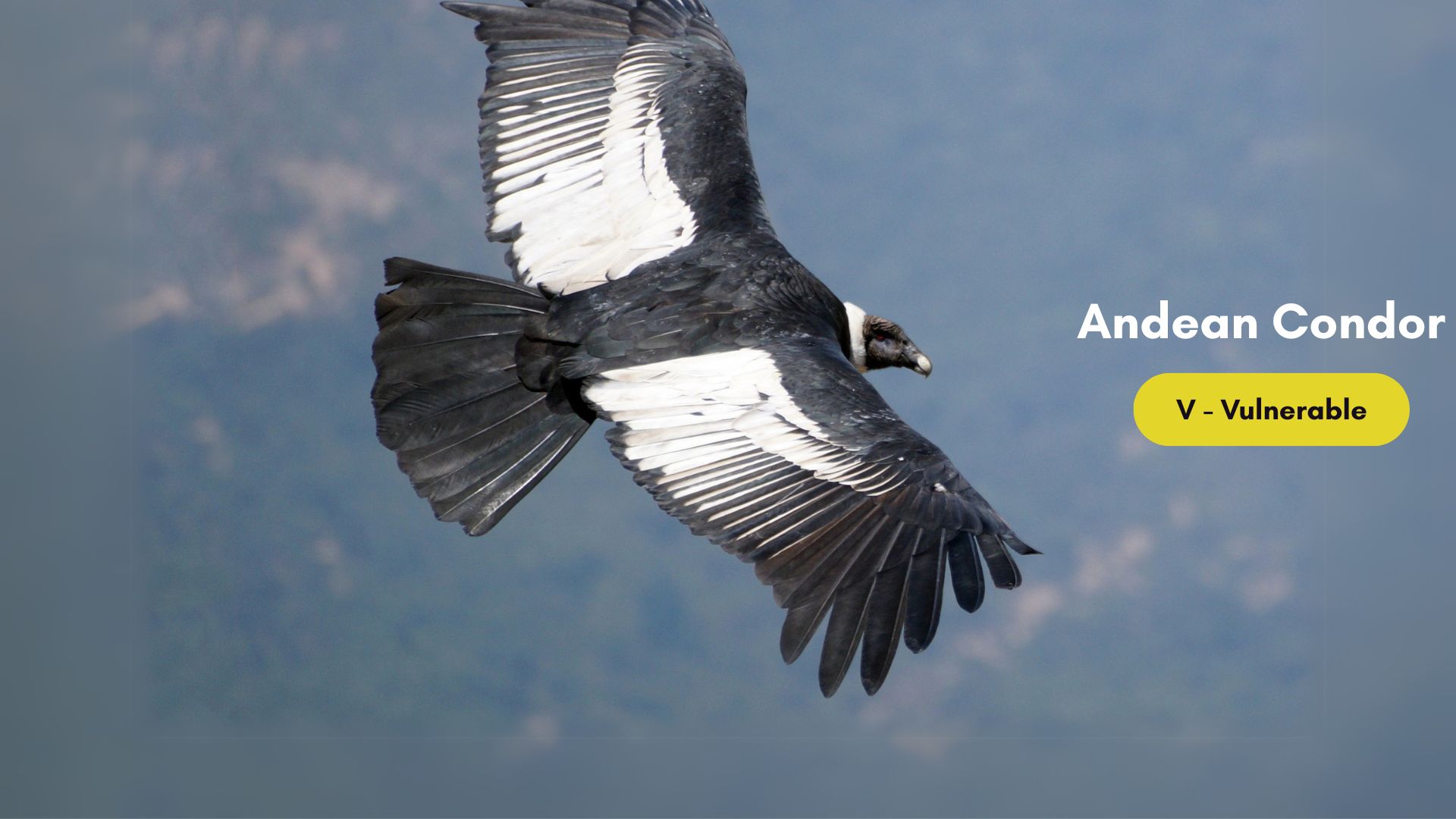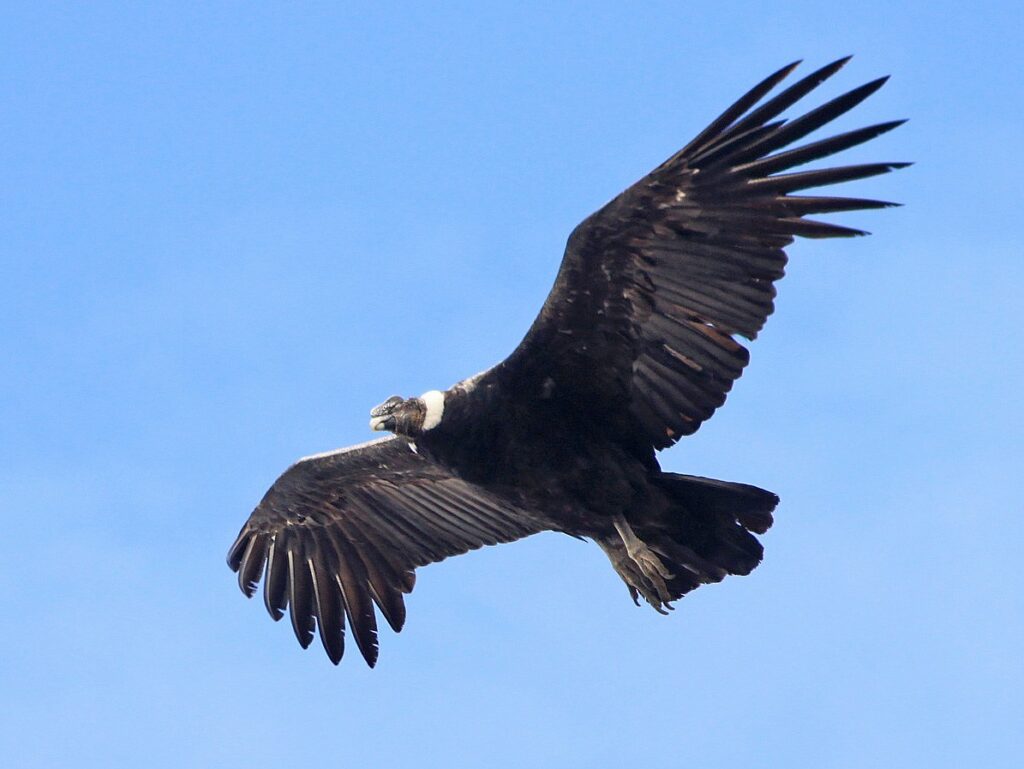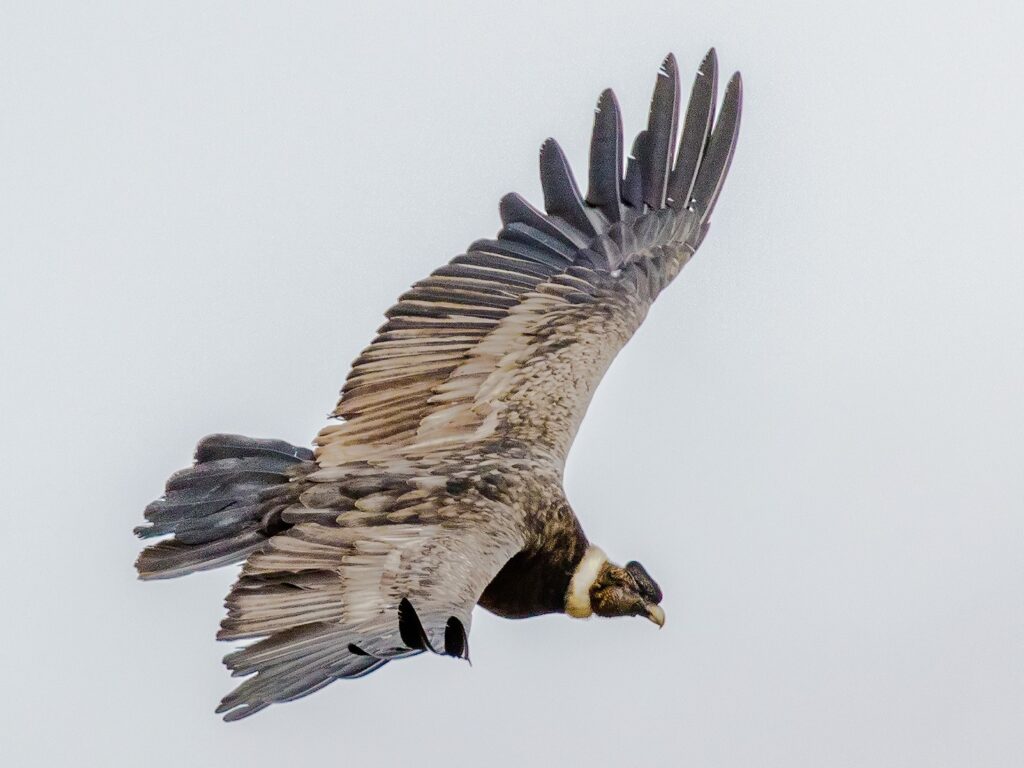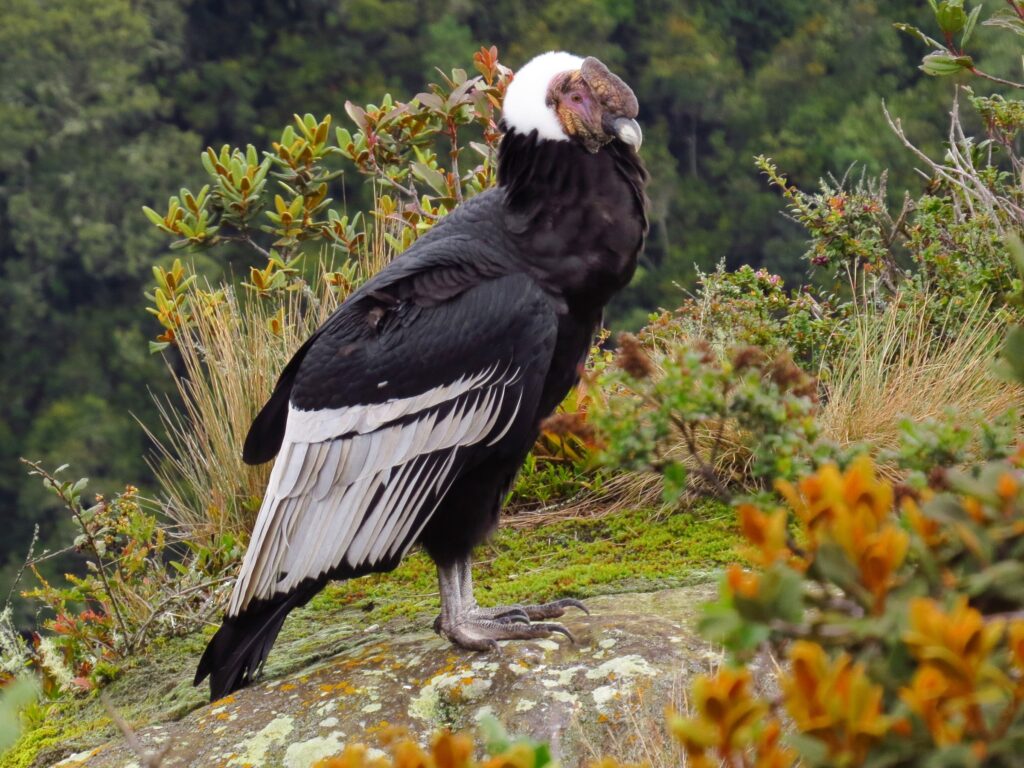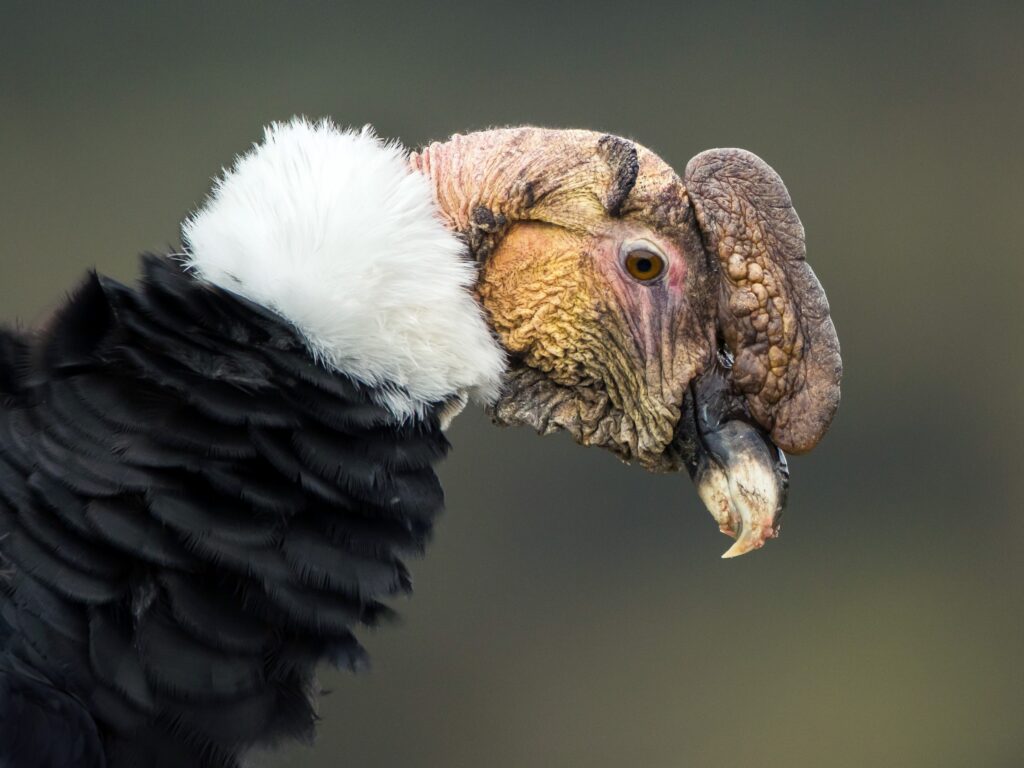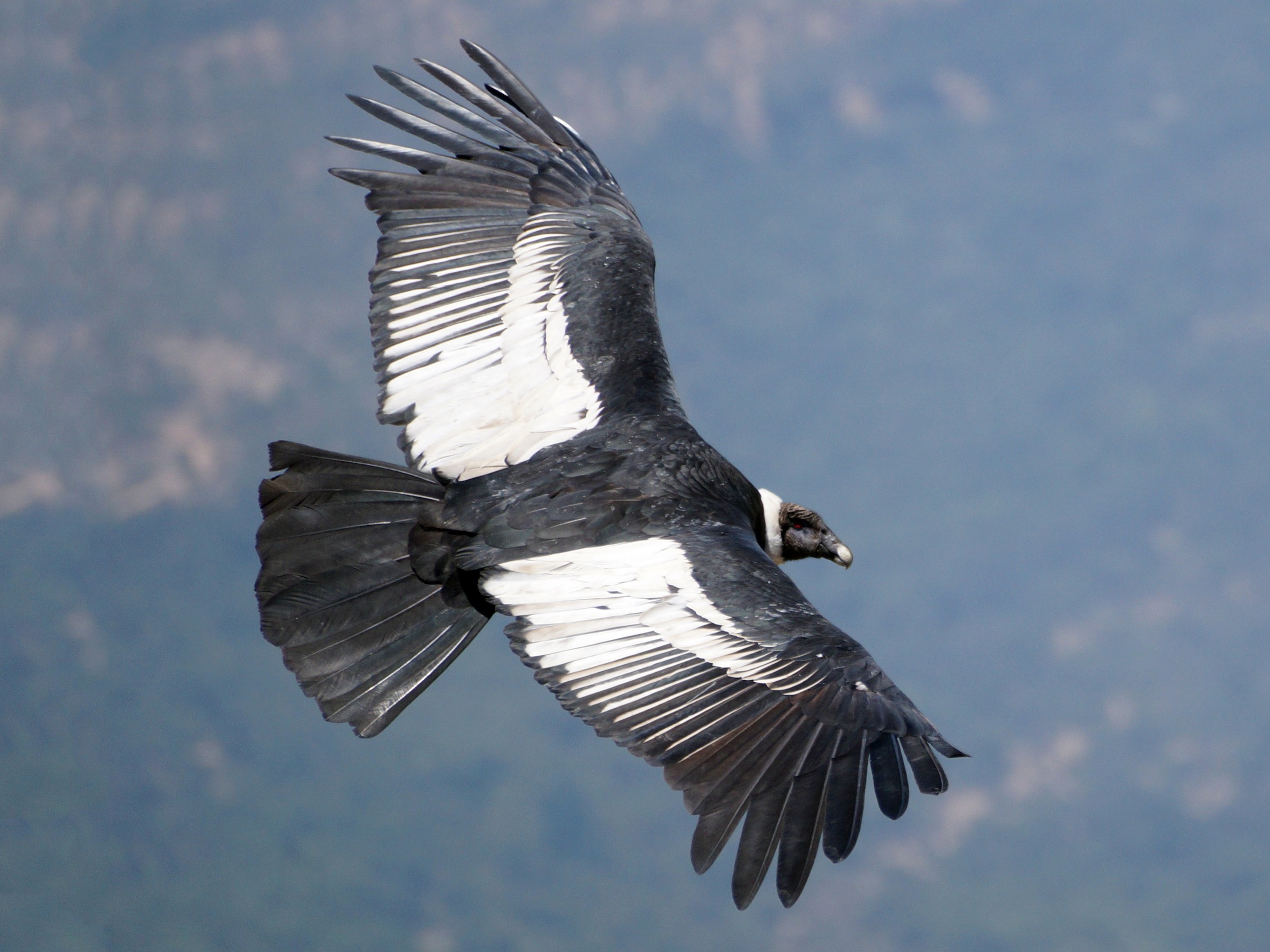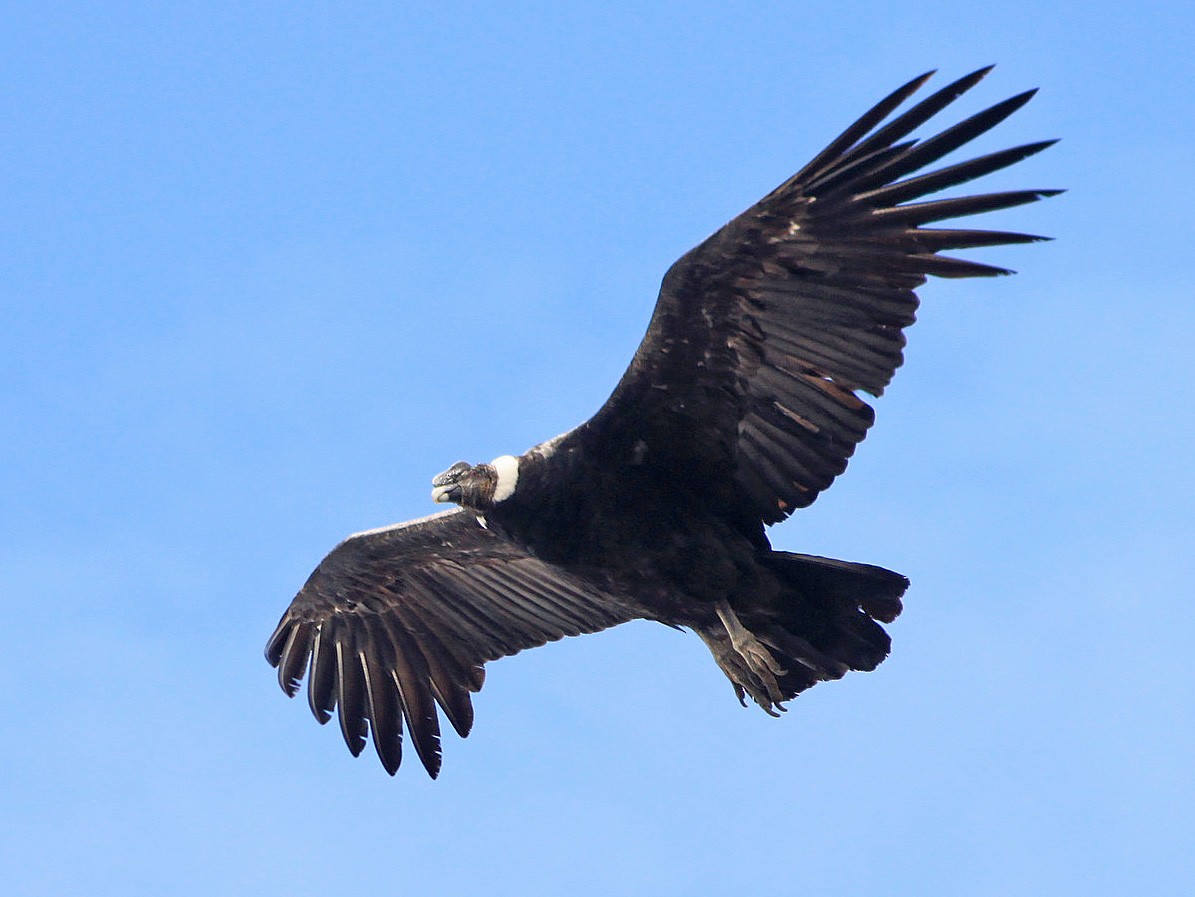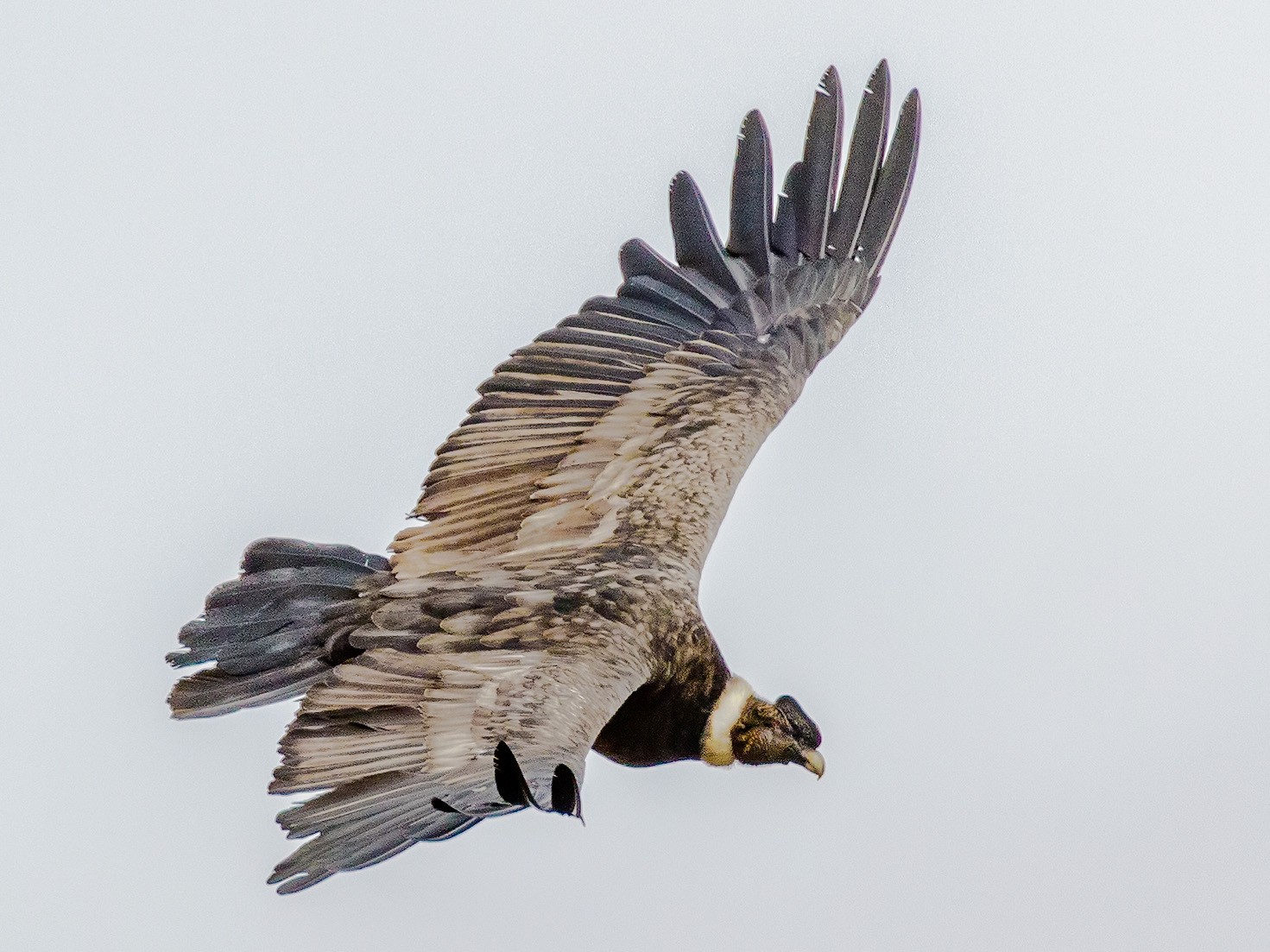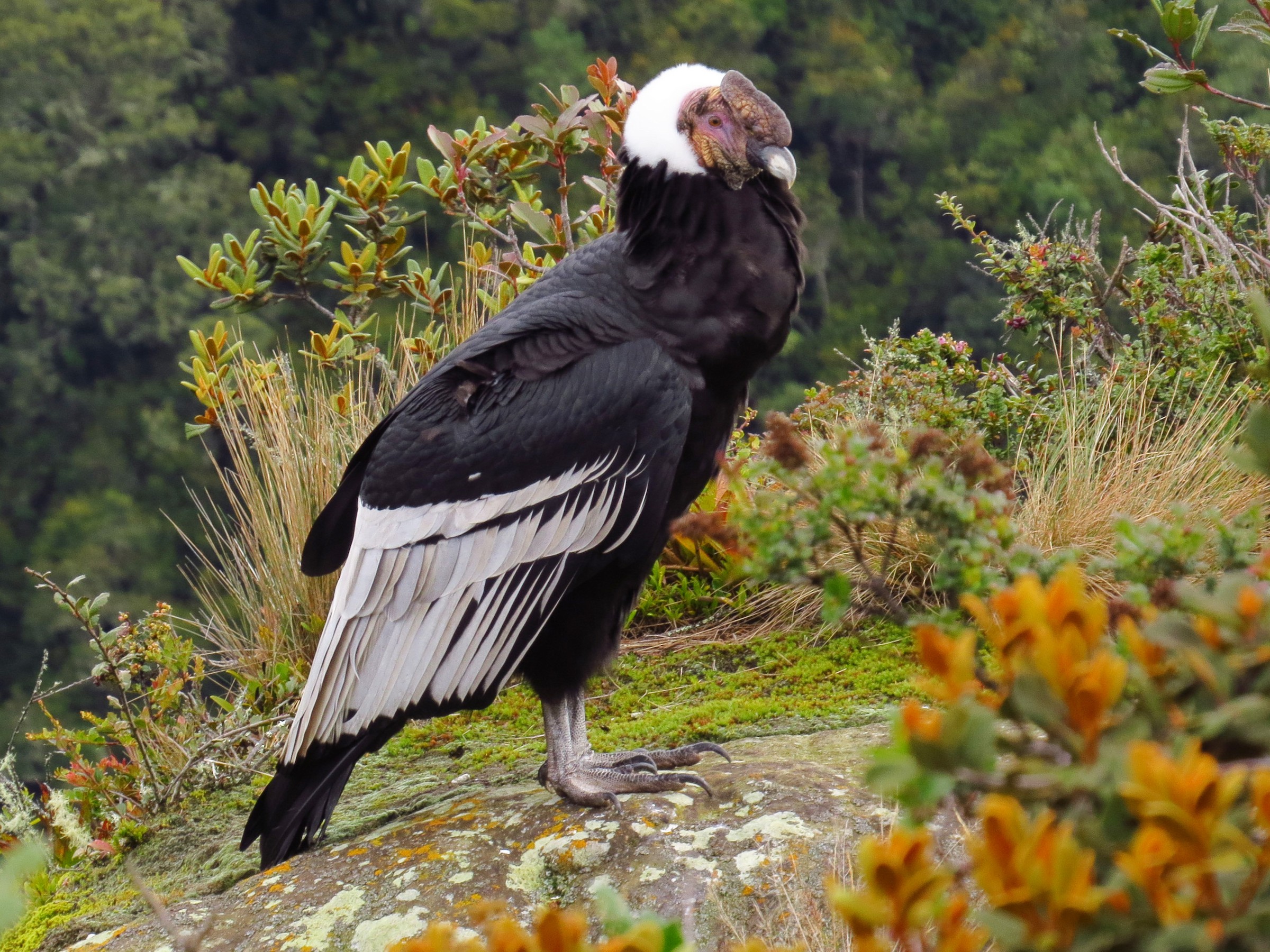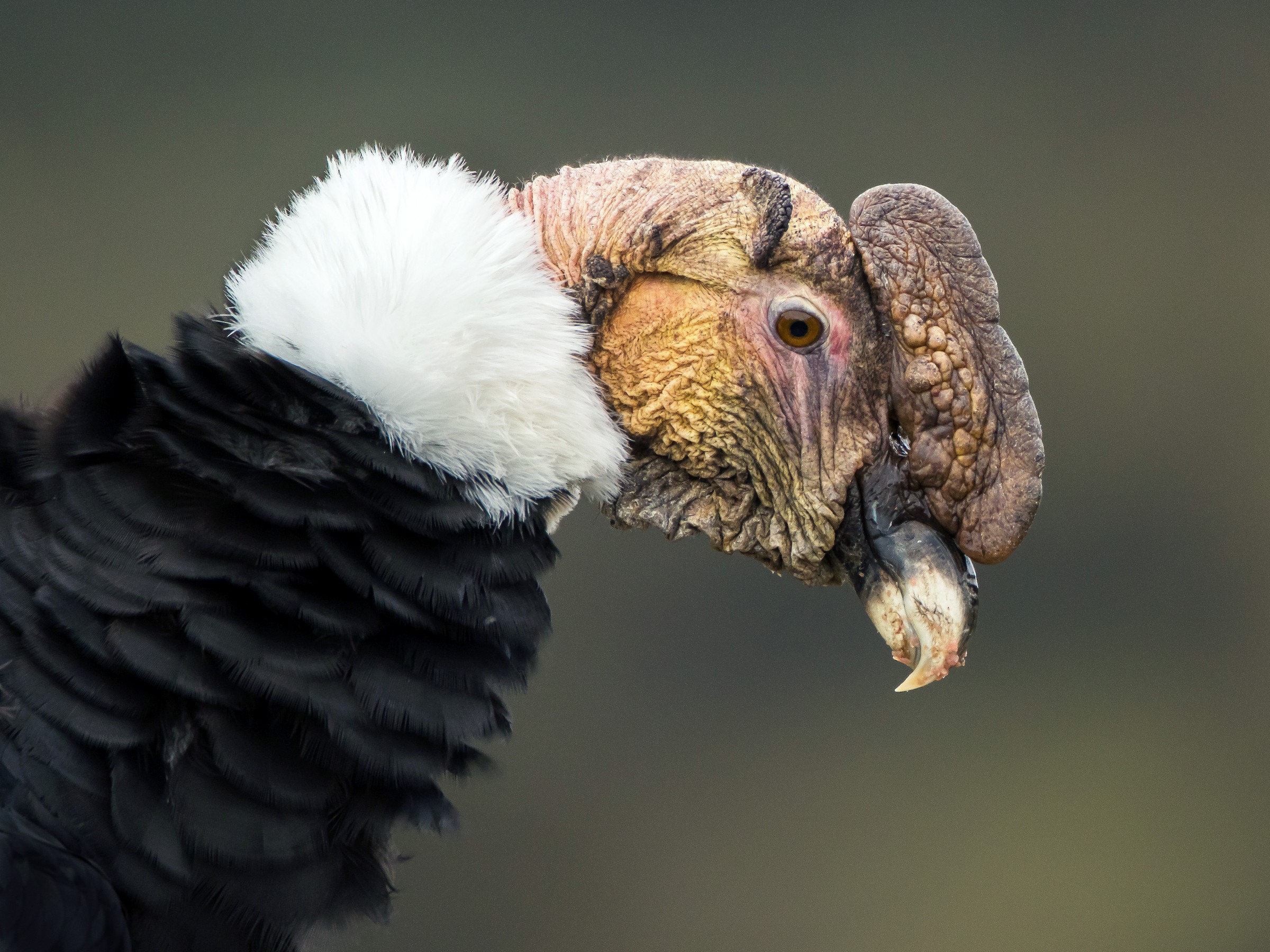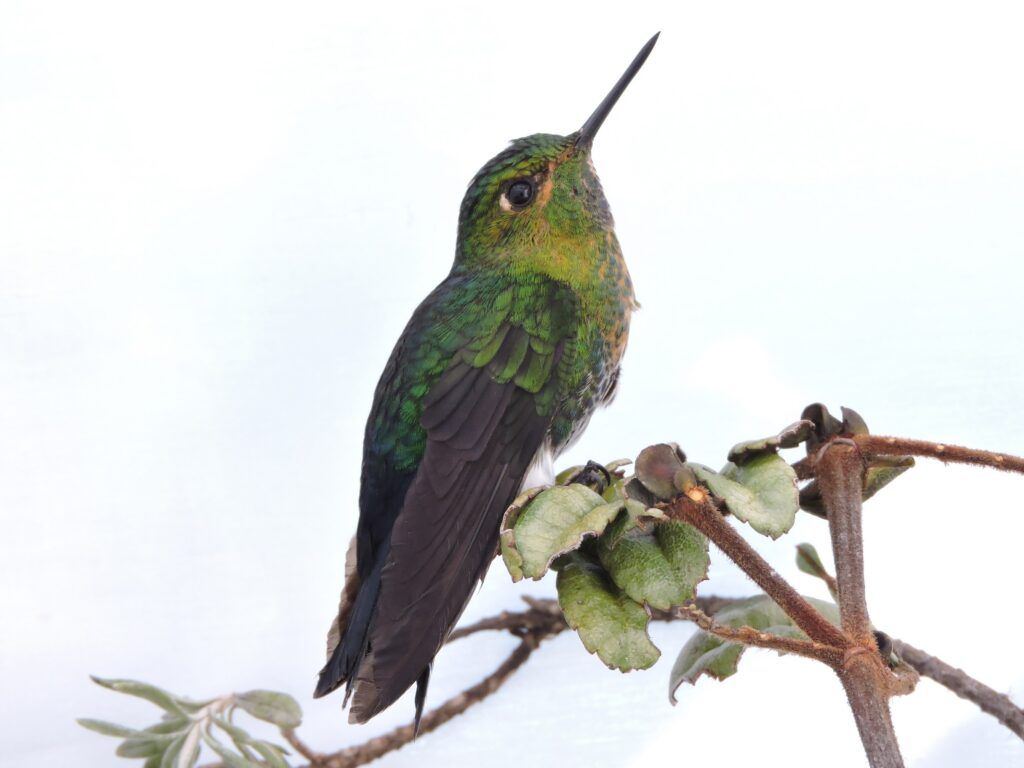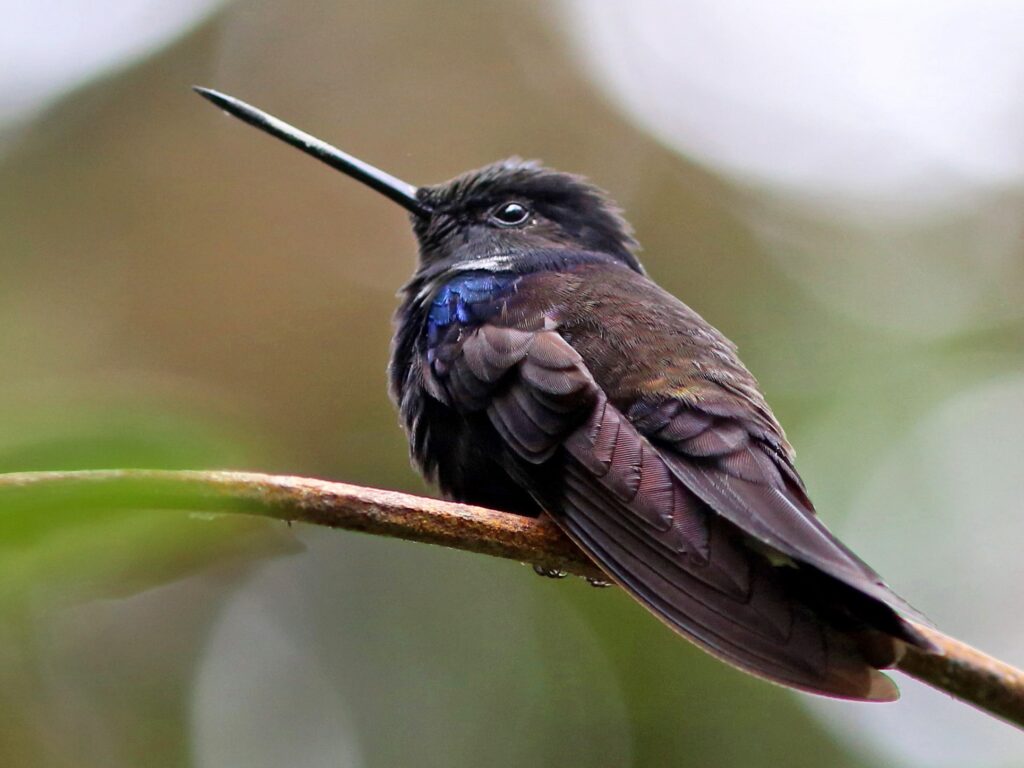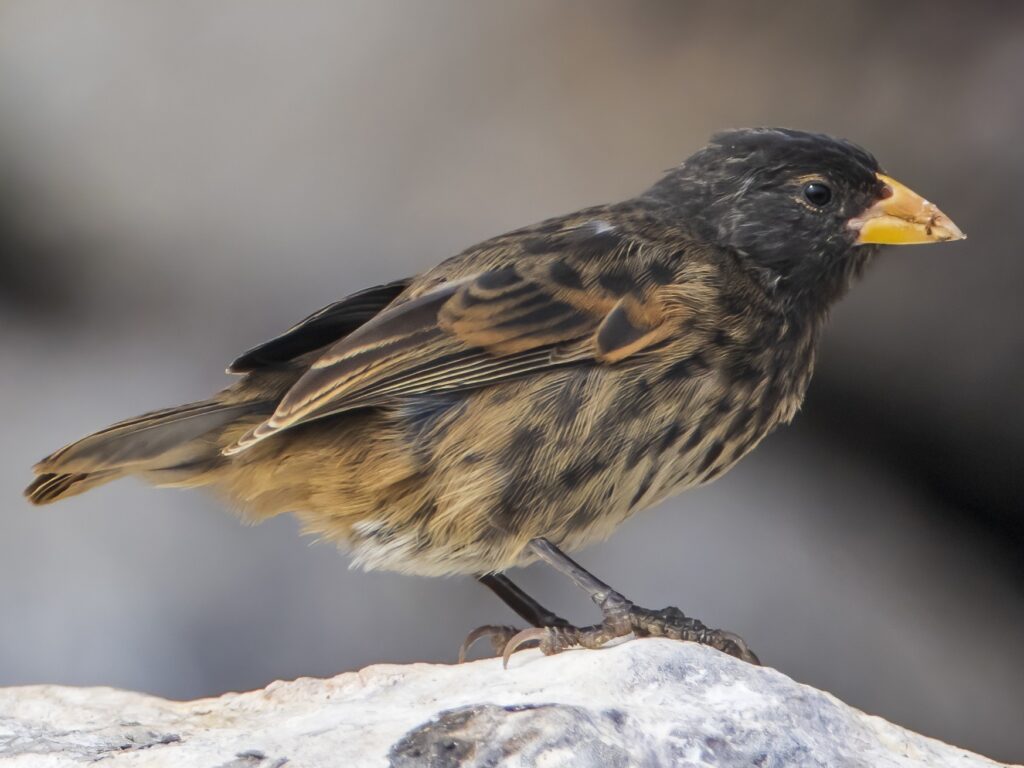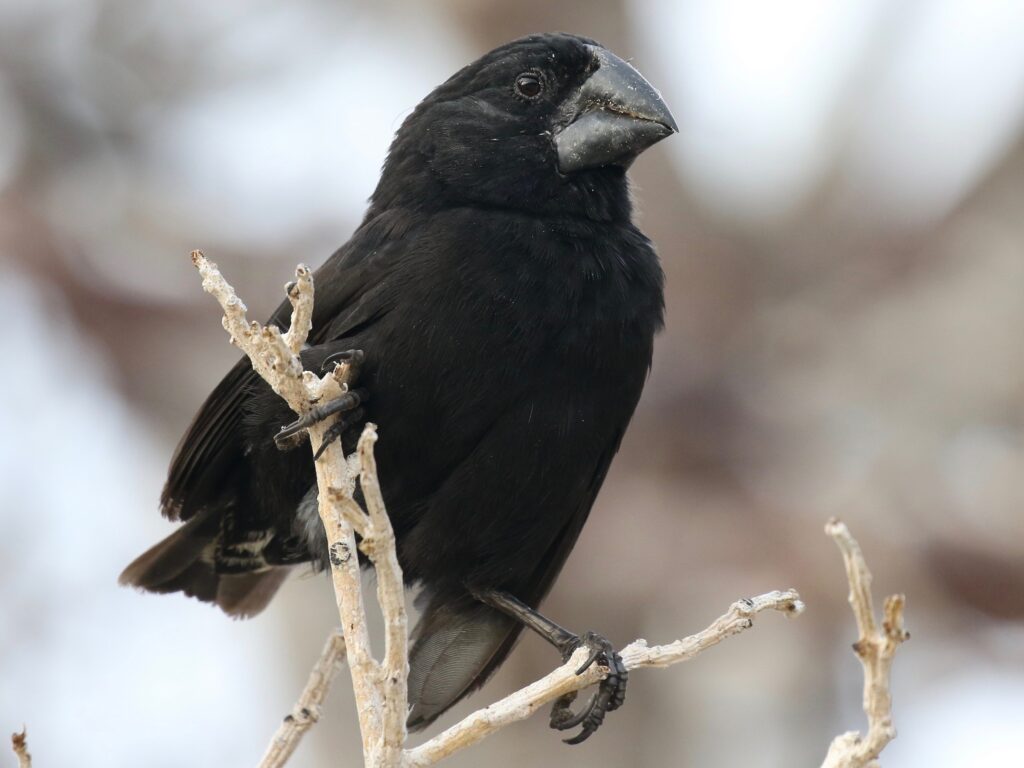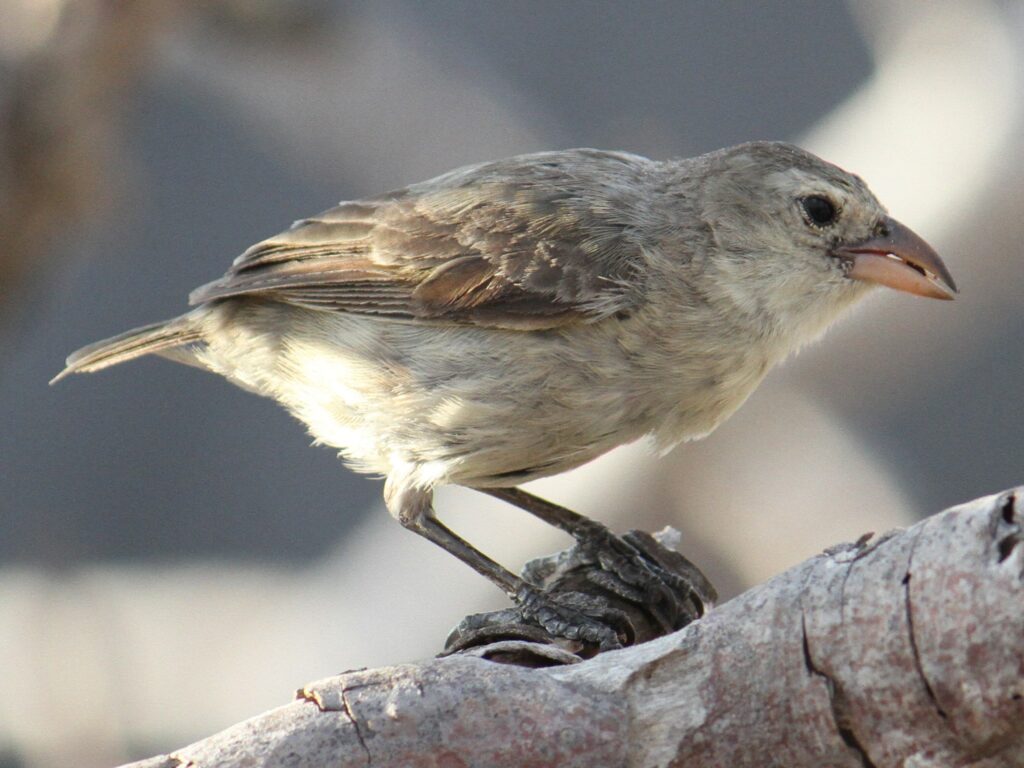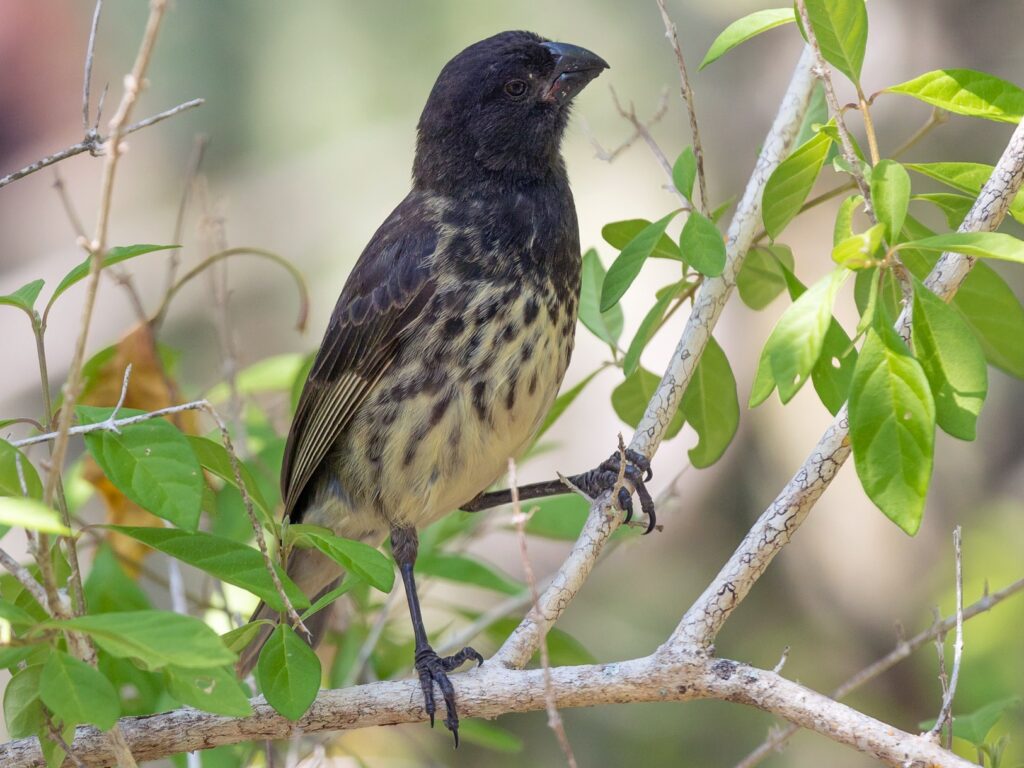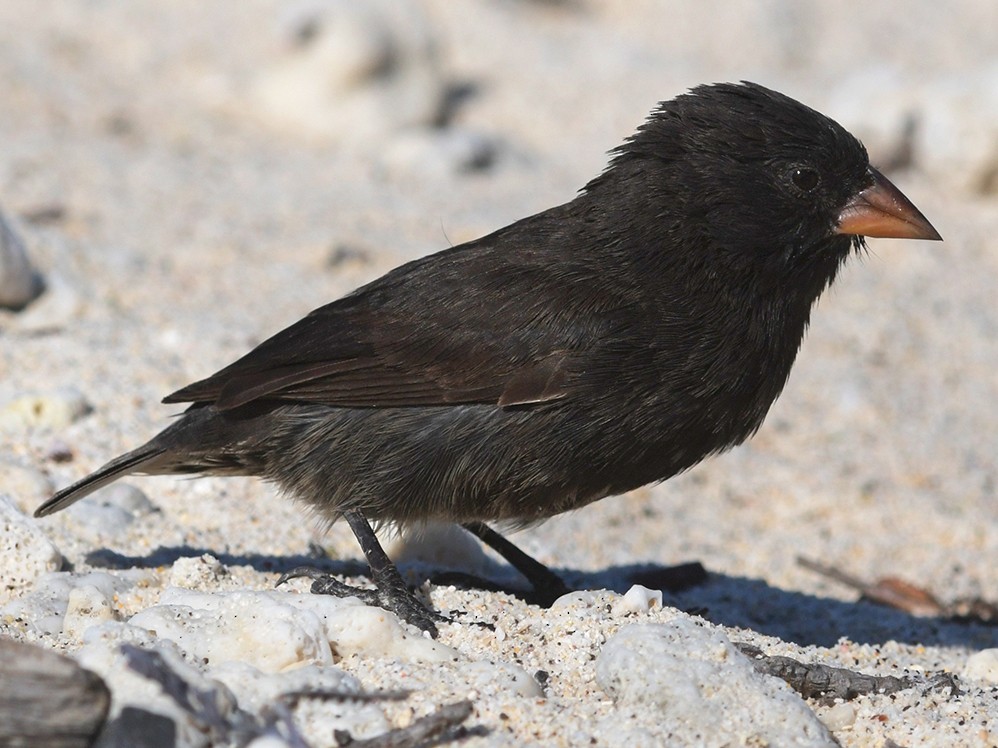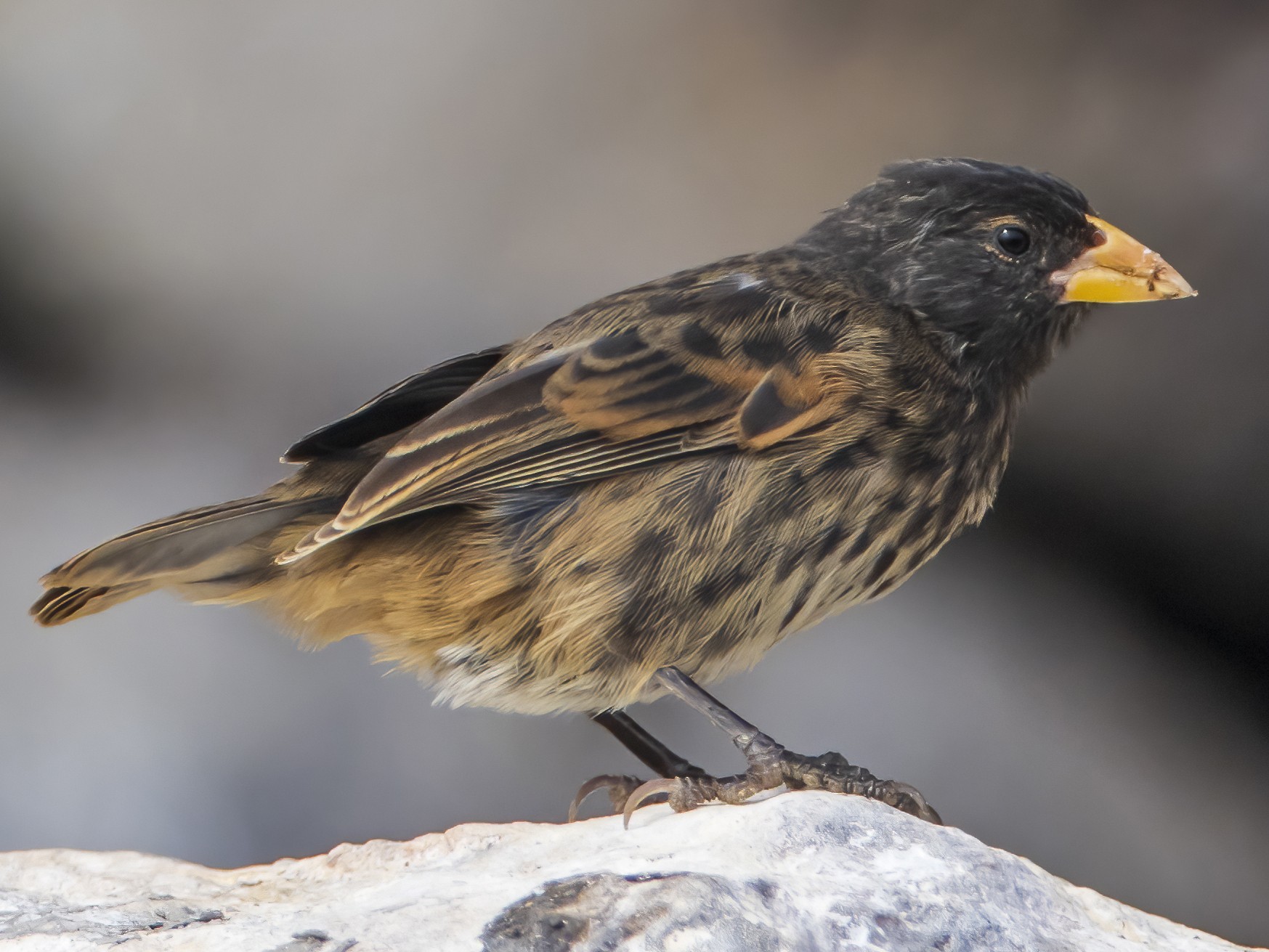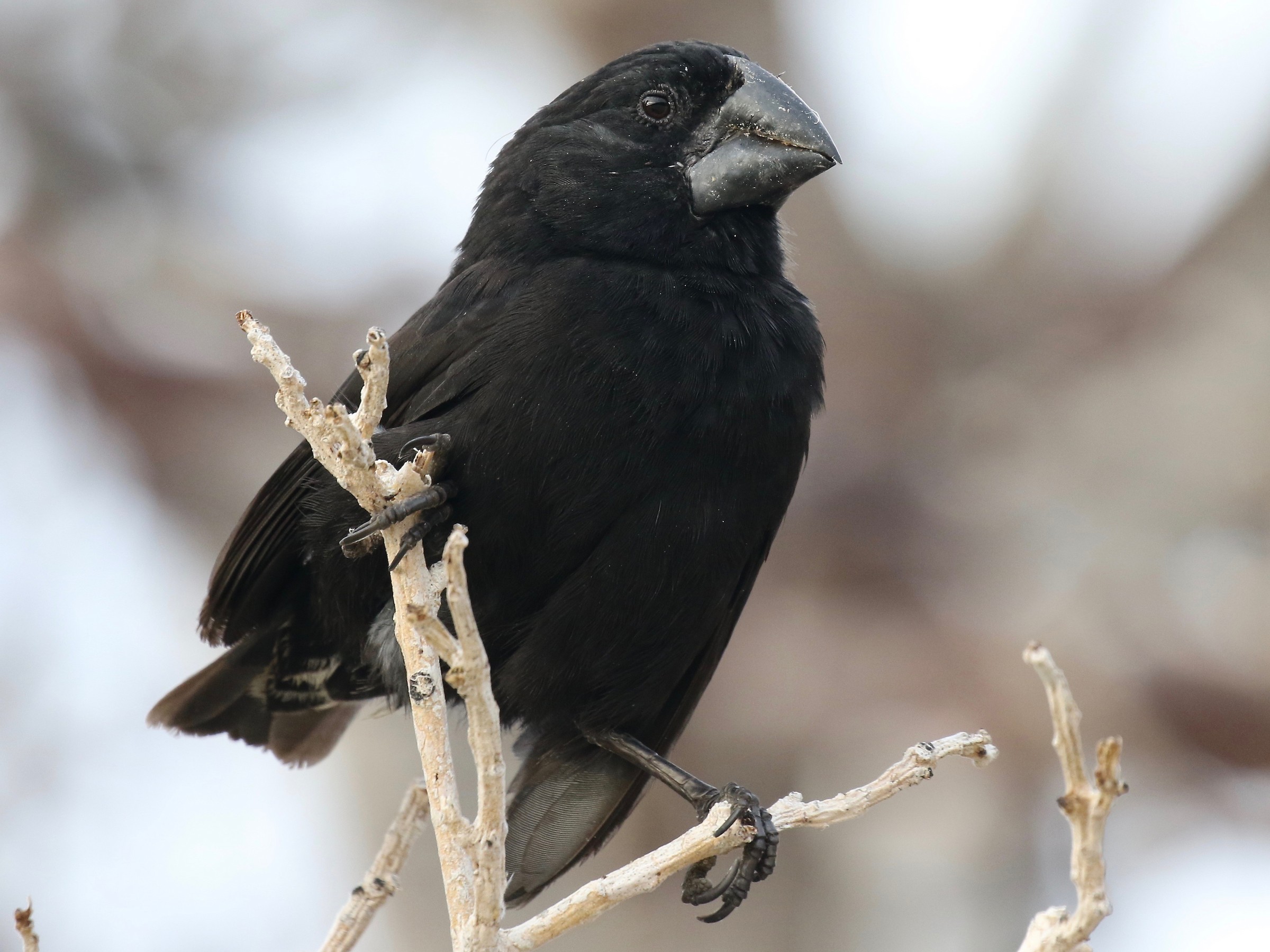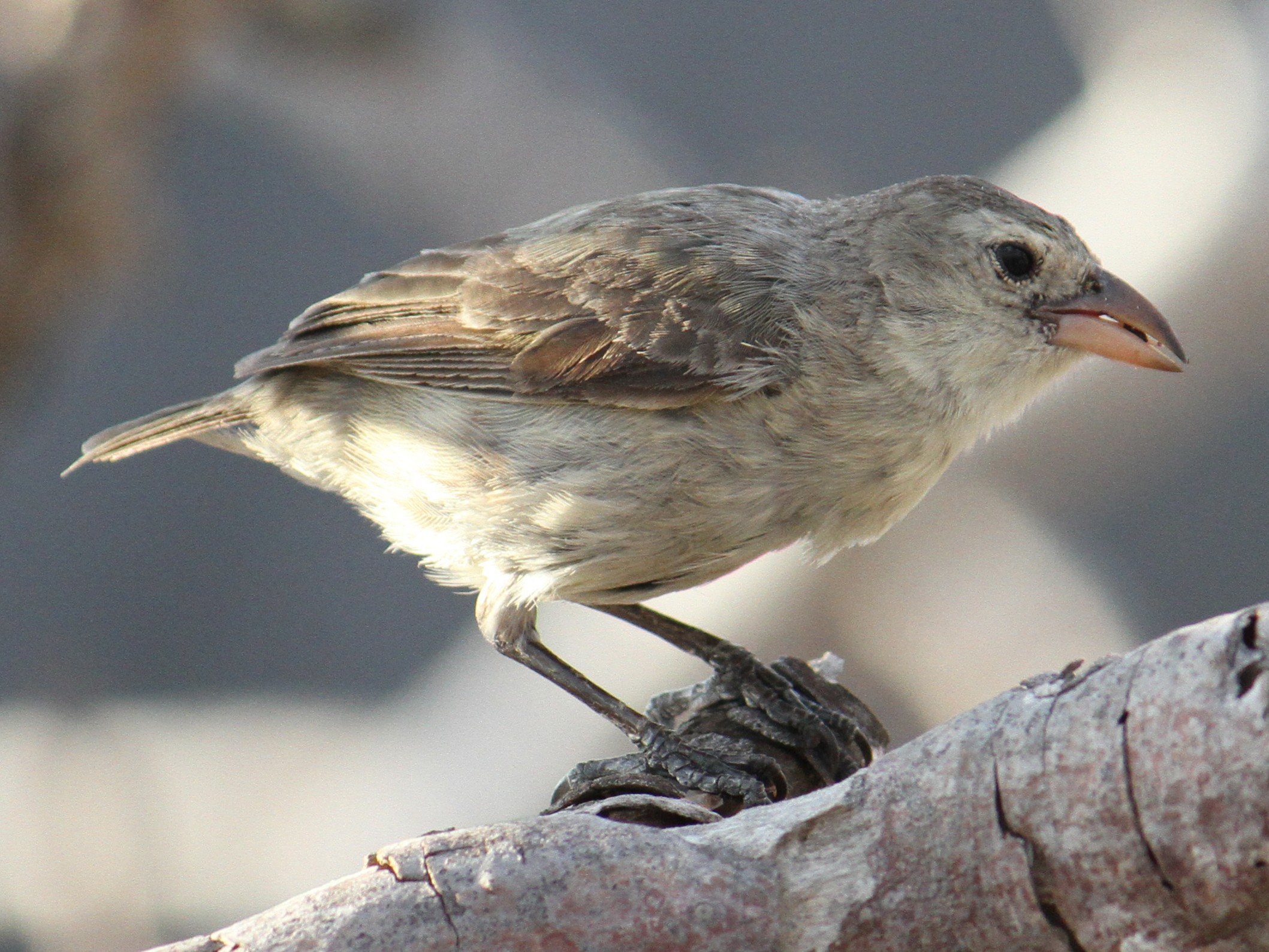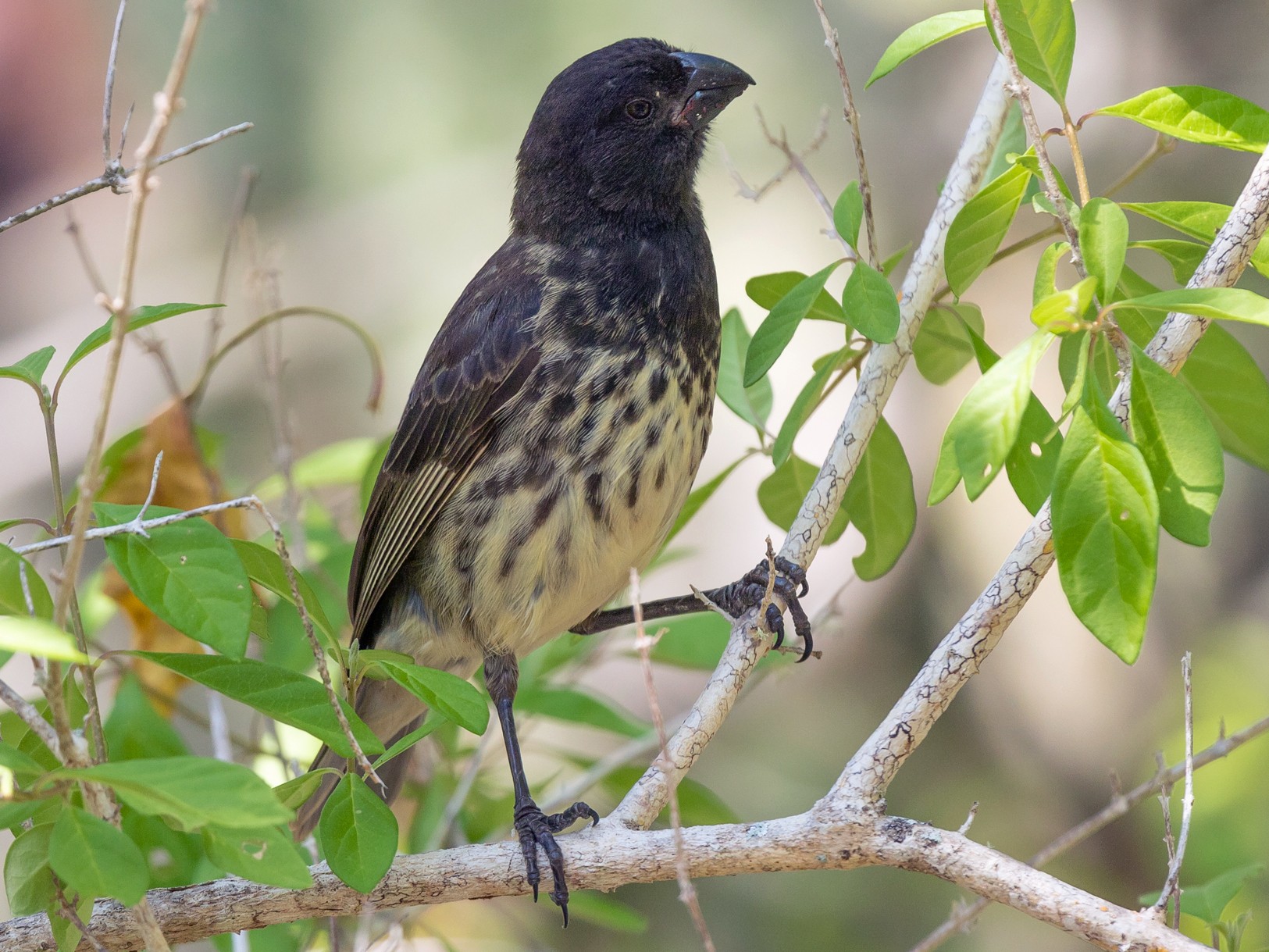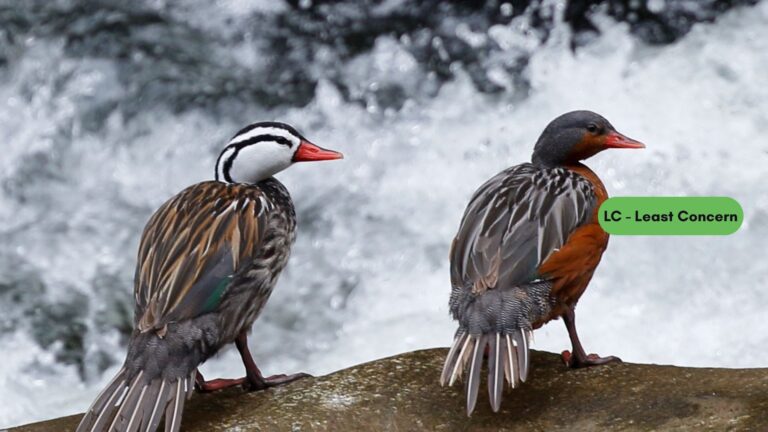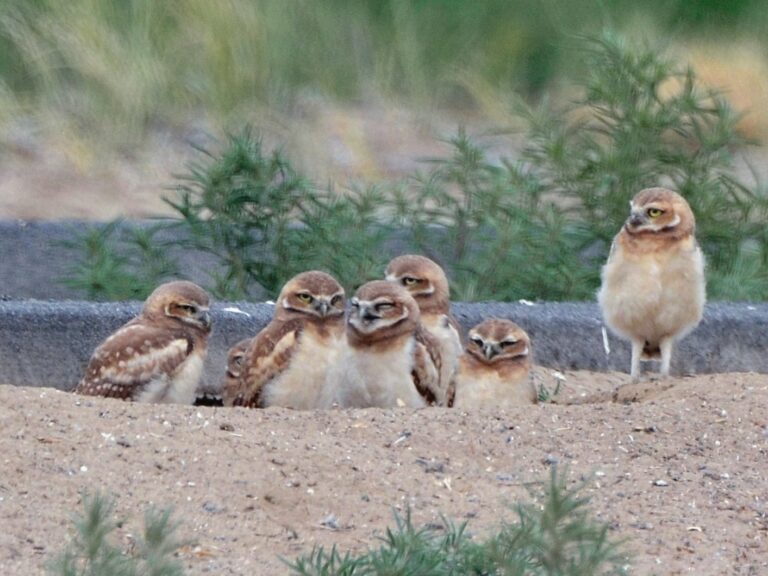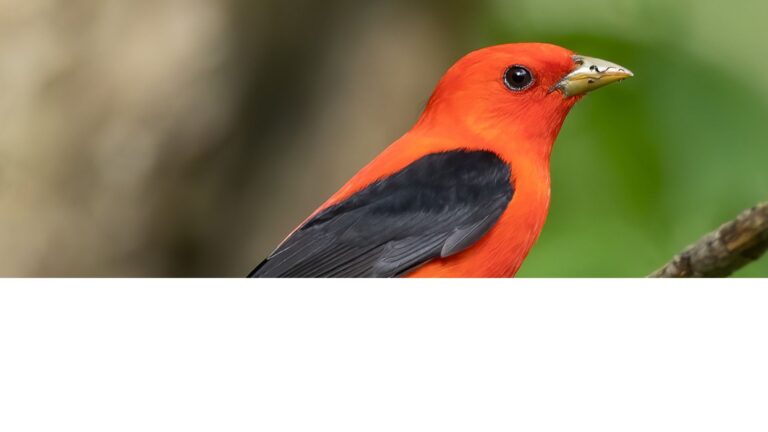Discovering the Beautiful Bounty of the Birds of South America
South America – The Undisputed Best Continent for Birdwatching
South America, a land of staggering geographical superlatives, rightfully earns its title as the “bird continent.” This vast expanse is not merely a landmass; it is an avian paradise, a vibrant theater where evolution has painted with its most extravagant palette with the birds of South America
The sheer numbers are astounding: the continent and its surrounding Neotropical region are home to an estimated 3,000 bird species, distributed across 89 families – a diversity far exceeding that of Africa or Asia. This incredible richness is a direct reflection of the continent’s global ecological significance.
Latin America, which encompasses South America, is home to over 40% of the world’s known biodiversity. More specifically, South America alone concentrates 40% of the planet’s biodiversity, shelters 25% of its forests, and holds 26% of its freshwater resources.
Such figures do more than impress; they underscore a profound global reliance on the health of South American ecosystems. The loss of biodiversity here is not a regional issue but a wound to the planet’s entire biological heritage.
This unparalleled avian abundance is fueled by an extraordinary variety of habitats, a consequence of the continent’s diverse topography and the presence of all major climate zones. From the snow-capped peaks of the Andes, which stretch like a colossal spine down its western flank, to the seemingly endless emerald expanse of the Amazon rainforest.
With the world’s largest, and from the sun-drenched coastal plains to the unique, isolated ecosystems of islands like the Galápagos, South America offers a myriad of niches for birdlife to exploit. This geographical and climatic mosaic has not only supported a vast number of species but has also driven remarkable evolutionary diversification, leading to a high degree of endemism.
Around 25 bird families are found exclusively in the Neotropical region, a testament to millions of years of distinct evolutionary pathways. The interplay between diverse environments and the evolutionary processes they foster is fundamental to understanding why South America stands as an unmatched haven for birds.
As you prepare to delve into this avian wonderland, begin your exploration of the continent’s feathered wonders with an overview of of many species here.
Journey Through South America’s Premier Birding Havens
South America’s immense avian diversity is best appreciated by journeying through its distinct biomes, each a unique stage for an incredible cast of feathered actors. From the humid depths of the rainforest to the windswept Patagonian plains, these havens offer unparalleled birdwatching experiences.
South America’s Avian Hotspots at a Glance
| Region/Biome | Approx. Bird Species | Highlight Endemic/Iconic Birds | General Best Time for Birding (can vary locally) |
|---|---|---|---|
| Amazon Rainforest | 1,300+ (overall) | Harpy Eagle, Macaws (Scarlet, Hyacinth), Toucans, Hoatzin, Antbirds | Dry Season (June-Nov) for trails; Wet Season (Dec-May) for flooded forest access |
| Andes Mountains | 1,700+ (Colombia alone has ~2000, many Andean) | Andean Condor, Torrent Duck, numerous Hummingbirds & Tanagers, Antpittas | Dry Season (May-Oct generally); Varies by specific slope/altitude; Sep-Feb for migrants |
| Pantanal Wetlands | 650+ | Jabiru Stork, Hyacinth Macaw, Herons, Ibises, Kingfishers | Dry Season (May-Sep) for concentrated wildlife |
| Atlantic Forest | 900+ (many endemics) | Numerous endemic Tanagers, Hummingbirds, Antbirds, Cotingas | Year-round, but often drier March-August; varies with altitude |
| Galápagos Islands | ~50 resident landbirds (high endemism) | Darwin’s Finches, Blue-footed Booby, Waved Albatross, Flightless Cormorant | Dec-May (warm/wet, breeding); June-Nov (cool/dry, sea lion pupping) |
| Grasslands/Pampas/Patagonia | Varies (many specialists) | Rheas, Penguins (southern coasts), Andean Flamingo, various grassland passerines | Spring/Summer (Sep-Feb) for breeding and milder weather in the south |
The Amazon Rainforest: Life Abounds in the Emerald Expanse
The Amazon, the planet’s largest tropical rainforest, is a realm of superlatives, a sprawling green ocean of biodiversity where life flourishes in bewildering variety. Its dense canopy, pierced by colossal emergent trees, and its complex understory create a multi-layered world teeming with avian wonders.
The constant humidity and abundant rainfall sustain this vibrant ecosystem, providing not just shelter but also intricate hunting grounds that have allowed birds to develop complex behaviors and fill highly specialized ecological niches. The Amazon is not merely a collection of species; it is an active evolutionary theater.
The very geography of the basin, with major rivers like the Amazon itself and its tributaries such as the Rio Negro and Rio Madeira, acts as barriers to gene flow for some species, contributing to the staggering diversity by fostering speciation in isolation. This makes the Amazon an “evolutionary engine,” constantly shaping and reshaping its avifauna.
Among the most dazzling inhabitants are the Macaws, whose plumage flashes like living jewels against the verdant backdrop. Their brilliant blues, reds, yellows, and greens are not just for show; these colors play vital roles in communication and intricate mating rituals.
The Scarlet Macaw (Ara macao), with its iconic red body and contrasting yellow and blue wings, is a common sight, often heard squawking loudly in pairs long before seen. The magnificent Hyacinth Macaw (Anodorhynchus hyacinthinus), the world’s longest parrot, is a vision in cobalt blue with striking yellow markings around its eyes and beak. Sadly, this stunning bird is endangered, its populations threatened by the illegal pet trade and the traditional use of its feathers by indigenous tribes.
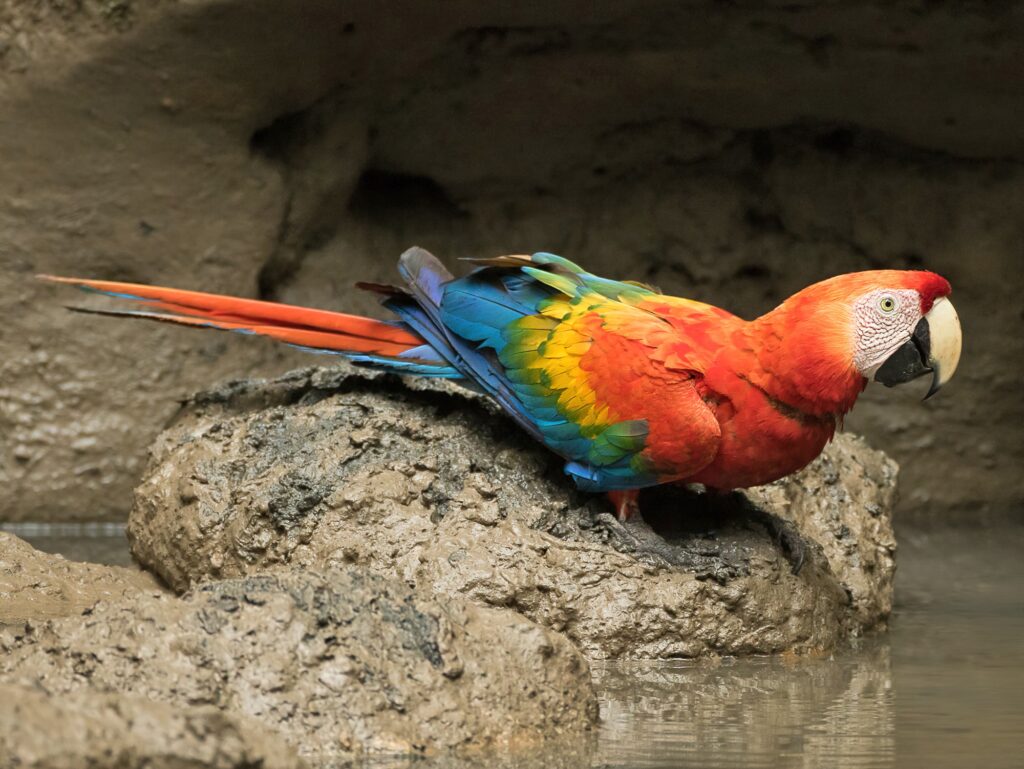
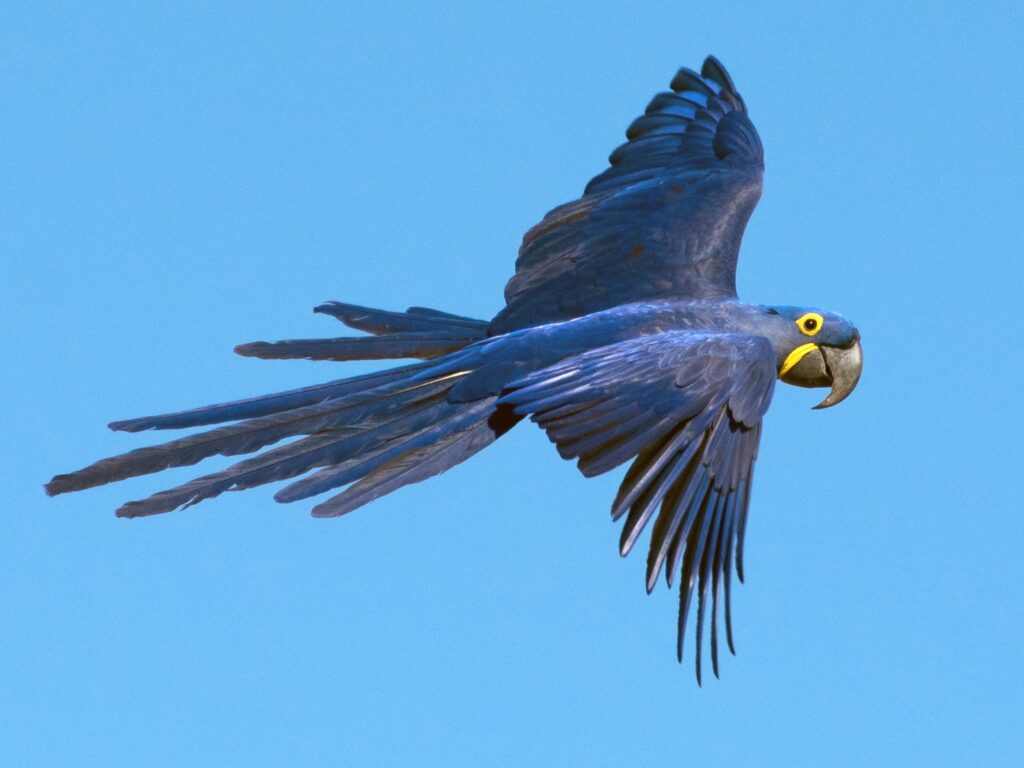
No less iconic are the Toucans, instantly recognizable by their oversized, vibrant bills. These beaks, despite their formidable appearance, are surprisingly lightweight, constructed from a hollow keratinous structure.
The Toco Toucan (Ramphastos toco) is the largest and most famous, its enormous bill serving not only to reach fruit on distant branches but also as a remarkable tool for thermoregulation, helping the bird to stay warm on chilly nights. Toucans are also crucial ecological players, acting as important seed dispersers, contributing to the regeneration and health of the forest. This interconnectedness is a defining feature of the Amazon: the birds are not passive residents but active participants in the ecosystem’s vitality.

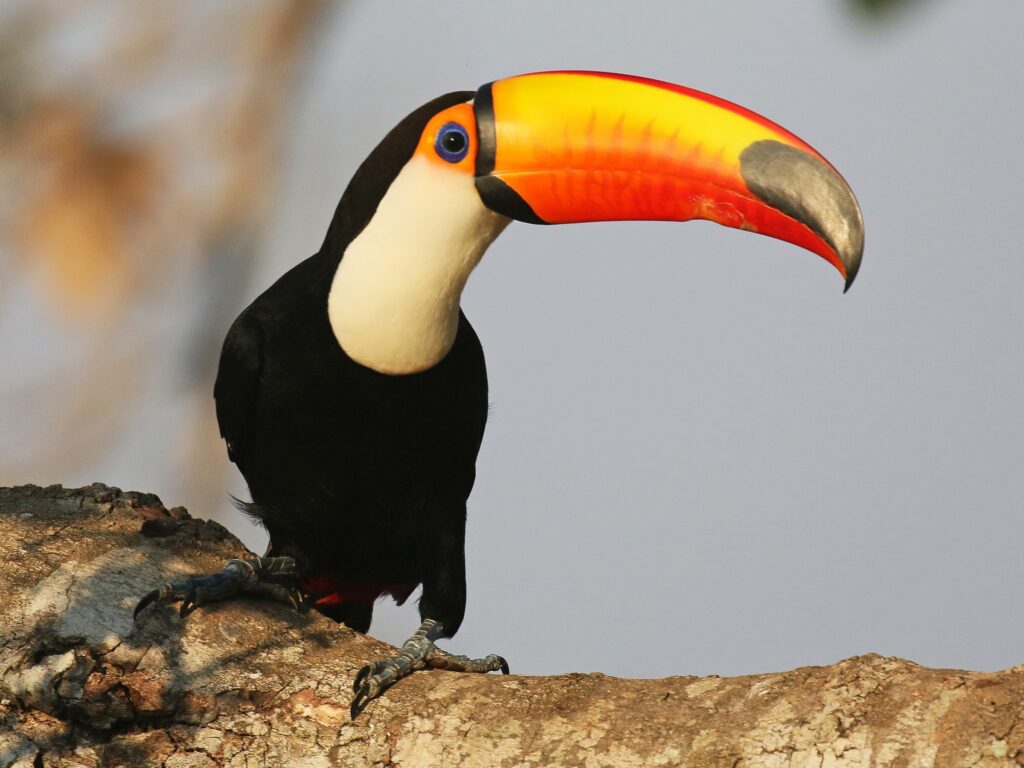
Soaring above the canopy, the Harpy Eagle (Harpia harpyja) reigns as one of the world’s most powerful avian predators. With talons comparable in size to a grizzly bear’s claws, it preys on tree-dwelling mammals like sloths and monkeys. This majestic eagle, with its striking grey, black, and white plumage, is unfortunately listed as vulnerable.
Misconceptions about threats to livestock (it rarely preys on them and never on humans) lead to persecution, while deforestation for agriculture, logging, and infrastructure projects shrinks its forest home and reduces the availability of large nesting trees. The decline of such an apex predator signals distress within the broader ecosystem, illustrating how habitat degradation can cascade through the food web.
The Amazon is also home to the peculiar Hoatzin (Opisthocomus hoazin), a crested, somewhat reptilian-looking bird whose young possess claws on their wings, a primitive trait. It often frequents riparian habitats, feeding on leaves. Beyond these flagships, the Amazonian forests are alive with a bewildering array of Antbirds, Manakins, Cotingas, Tanagers, Woodpeckers, Parrots, and Tinamous, groups that dominate the avian landscape.
The Golden-headed Manakin (Ceratopipra erythrocephala), for instance, is famed for its elaborate, acrobatic mating dance. The sheer number of endemic species, such as the Amazonian Motmot, King Vulture, and the dazzling Crimson Topaz, further underscores the Amazon’s unique evolutionary heritage.
Regions like Amazonas state in Brazil, boasting around 950 recorded bird species , and the Peruvian Amazon, where a single 5,500-hectare section can yield 575 species , highlight the mind-boggling concentration of birdlife.
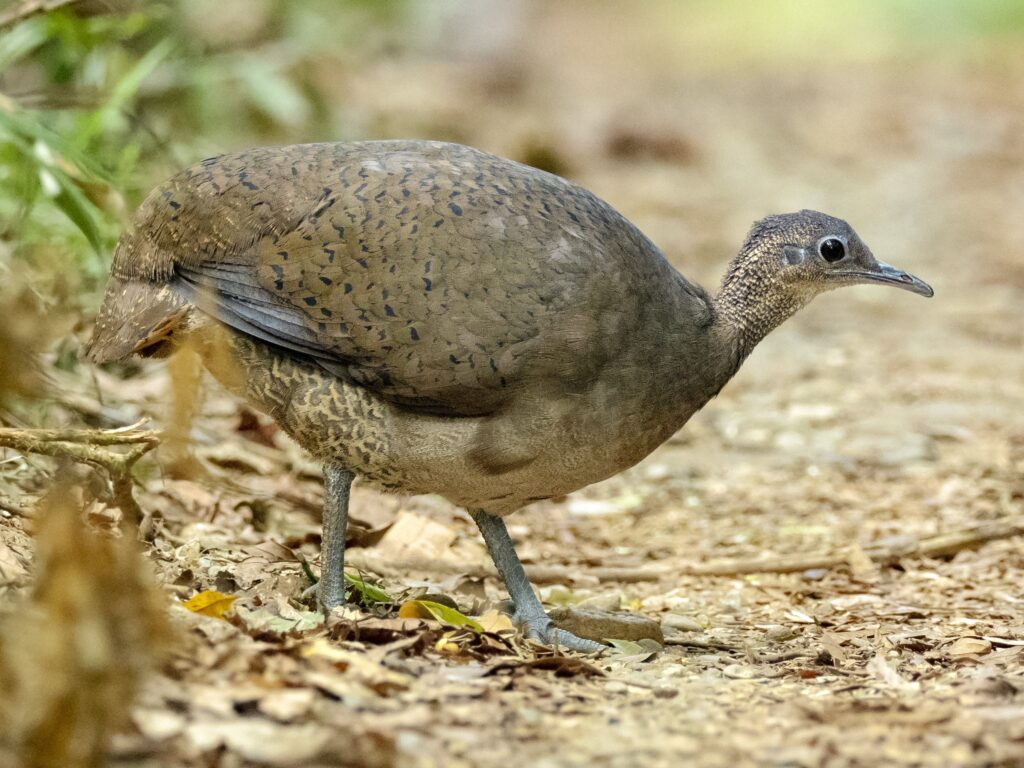

The Andes Mountains: From Soaring Condors to Dazzling Hummingbirds
Stretching for thousands of miles along western South America, the Andes Mountains form a landscape of dramatic beauty and extreme environmental gradients, giving rise to an extraordinary diversity of birdlife adapted to its high-altitude realms.
The Tropical Andes, in particular, are recognized as one of the planet’s most critical biodiversity hotspots, nurturing an astonishing array of birds and holding claim to more than one-sixth of all plant species on Earth. Countries like Colombia, whose territory is crossed by three Andean spurs (cordilleras), boast the highest bird species count globally, a testament to the habitat heterogeneity created by these mountains.
These varied habitats range from misty páramo and puna grasslands at the highest elevations, through cloud forests cloaked in perpetual moisture, to mystical elfin forests clinging to steep slopes. This complex topography, with its series of ranges, deep valleys, and distinct altitudinal zones, effectively creates a “vertical archipelago.”
Each valley and mountain slope can act as an isolated “island” of habitat, fostering high rates of speciation and endemism, particularly evident in groups like hummingbirds and tanagers. The rapid geological uplift of the Andes, particularly between 10 and 6 million years ago, coincides remarkably with the diversification of many modern hummingbird lineages, suggesting a powerful link between mountain formation and avian evolution.
The undisputed monarch of the Andean skies is the Andean Condor (Vultur gryphus). As the largest raptor globally and the largest flying bird in South America, its presence is awe-inspiring. With a wingspan that can reach an astonishing 3 meters (nearly 10 feet), these magnificent scavengers patrol the mountains and valleys.
Andean Condors exhibit sexual dimorphism: males are larger, sporting a distinctive fleshy comb (caruncle) on their heads and yellow eyes, while females lack the comb and have red eyes. Their bald heads are a practical adaptation for feeding on carrion, keeping feathers clean.
They are masters of soaring, utilizing thermal air currents to glide effortlessly for hours, covering vast distances in search of food with minimal wing flapping. Despite their imposing size and powerful beaks, Andean Condors are primarily scavengers, feeding on the carcasses of large animals, and they maintain a social hierarchy at feeding sites.
Sadly, this iconic species is listed as “Vulnerable” due to a combination of threats, including persecution by farmers who mistakenly believe they threaten livestock, habitat loss, and secondary poisoning from baited carcasses intended for other predators. Prime locations for observing these giants include Peru’s Colca Canyon and Chile’s Torres del Paine National Park.
At the other end of the size spectrum, yet equally dazzling, are the Hummingbirds. South America, and the Andes in particular, is the global epicenter of hummingbird diversity, with over 140 species gracing these mountains. These tiny, iridescent jewels are renowned for their vibrant, metallic colors and extraordinary aerial acrobatics, including the ability to hover motionless, fly backward, and beat their wings up to 80 times per second.
Their evolution is inextricably linked with that of the flowering plants they pollinate, a classic example of co-evolution. Many Andean plants have evolved “ornithophilous” (bird-loving) flowers – typically tube-shaped and brightly colored in reds, pinks, or oranges – perfectly suited for hummingbird bills. This intricate dance of adaptation has driven diversification in both groups.
Hummingbirds also possess remarkable physiological adaptations, such as the ability to enter a state of torpor (temporary hibernation) to conserve energy on cold nights and an exceptional spatial memory that guides them back to reliable food sources. The Andes are home to a spectacular array of endemic hummingbirds, many of which are critically endangered, including the Colorful Puffleg (Eriocnemis mirabilis), Black Inca (Coeligena prunellei), and Gorgeted Puffleg (Eriocnemis isabellae). The loss of specific flowering plants due to habitat changes could directly threaten these specialized hummingbirds, highlighting the fragility of these co-evolved relationships.
The Andes are also famed for their vibrant Tanagers, with Colombia alone hosting over 60 species, many adorned in breathtaking combinations of colors. Endemic species like the Gold-ringed Tanager (Bangsia aureocincta) and the Multicoloured Tanager (Chlorochrysa nitidissima) are prized sightings for birders.
Another sought-after group are the elusive Antpittas, ground-dwelling birds known for their shy nature and beautiful songs. Colombia is home to eight species , with Andean endemics including the Cundinamarca Antpitta (Grallaria kaestneri) and the Brown-banded Antpitta (Grallaria milleri). Beyond these, a wealth of other endemic birds, such as the unique Torrent Duck (which navigates fast-flowing mountain rivers), the Royal Cinclodes, and numerous species of Tapaculos, contribute to the Andes’ unparalleled avian richness.
Many of Colombia’s approximately 80 endemic bird species are found in its Andean regions , and Peru boasts over 50 endemics in its Andean highlands. The high peaks are home to such marvels as the eye-ringed thistletail. Further north, in Venezuela’s mountains, one might encounter the , and in Peru, the distinctive Caracas Brushfinch is a notable inhabitant.
The Pantanal: A Wetland Spectacle of Unrivaled Abundance
The Pantanal, sprawling across Brazil and parts of Bolivia and Paraguay, stands as the world’s largest tropical wetland, a vast, seasonally flooded basin primarily fed by the Paraguay River. This immense watery wilderness transforms dramatically with the seasons, creating a dynamic ecosystem that supports an almost unbelievable concentration of wildlife, particularly birds.
The sheer abundance of waterbirds, raptors, and other creatures is often compared to the great wildlife spectacles of Africa, offering easily accessible and rewarding viewing. The seasonal pulse of flooding and drying is key to this abundance; as waters recede during the dry season, aquatic life becomes concentrated in shrinking pools and channels, attracting vast numbers of birds and other predators. This natural cycle makes the Pantanal an incredibly productive ecosystem and a critical “concentration point” for wildlife.
Among the most iconic avian residents is the Jabiru Stork (Jabiru mycteria), a magnificent giant standing up to 1.5 meters (nearly 5 feet) tall, its striking black head and neck contrasting with its white body and a red pouch at the base of its neck. Hundreds of these storks can often be seen dotting the landscape. Another star of the Pantanal is the Hyacinth Macaw (Anodorhynchus hyacinthinus).
Celebrated for its stunning cobalt-blue plumage and bright yellow rings around the eyes and beak, this, the largest of all flying parrots, finds a crucial refuge here. The Pantanal is considered one of the best places in the world to observe this endangered species, whose populations have been impacted by habitat loss and the illegal pet trade.


The wetlands are alive with a constant flurry of activity from countless Herons, Ibises, Egrets, Storks, and Spoonbills. Species such as the Cocoi Heron, the cryptically patterned Rufescent Tiger Heron, the Bare-faced Ibis, Wood Stork, and the flamboyantly pink Roseate Spoonbill are common sights, often seen wading through shallow waters or congregating in large numbers.
The waterways also host several species of Kingfishers, including the Ringed, Amazon, and Green Kingfishers, which dart along riverbanks in search of fish. Other notable avian inhabitants include the elegant Sunbittern, the noisy Limpkin, the bizarre Southern Screamer , the flightless Greater Rhea, and the Bare-faced Curassow.
The famous Transpantaneira Road, an unpaved highway that traverses the northern Pantanal, offers exceptional roadside birding opportunities, with pools and marshes flanking the road teeming with life. Boat excursions along the region’s rivers, such as the Miranda or Pixaim, are essential for exploring deeper into the wetlands and provide excellent chances to see not only a superb variety of birds but also mammals like Capybaras, Giant Otters, and Yacaré Caiman.
The Pantanal’s spectacular wildlife and accessibility have made it an increasingly important ecotourism destination. This rise in nature-based tourism, centered around flagship species like the Jaguar and Hyacinth Macaw, holds significant potential for conservation.
When local communities benefit economically from protecting these species and their vast wetland habitat, they are more likely to become dedicated stewards, creating a positive feedback loop where tourism supports conservation. However, careful management is crucial to ensure that tourism itself does not become a threat to this delicate and vital ecosystem.
The Atlantic Forest: A Fragile Realm of Endemic Jewels
Stretching along Brazil’s eastern coast and extending into parts of Paraguay and Argentina, the Atlantic Forest (Mata Atlântica) is a biodiversity hotspot of global significance. Tragically, it is also one of the world’s most threatened ecosystems, with only a fraction of its original extent remaining, much of it in fragmented patches.
Despite this, these remnants, recognized collectively as a UNESCO Natural World Heritage Site, harbor an astonishingly rich avifauna characterized by an exceptionally high number of endemic species. Southeast Brazil, a core area for this biome, has recorded some 1,113 bird species, including a staggering 147 Brazilian endemics, which represents 61% of all bird species unique to Brazil.
This extraordinary concentration of unique life in such a diminished and fragmented habitat makes the Atlantic Forest a critical “conservation priority hotspot.” The loss of even small forest patches here could mean the global extinction of species found nowhere else on Earth.
The region’s topography, featuring an altitudinal gradient from humid lowland rainforests to montane grasslands, contributes to its diverse environments and, consequently, its rich birdlife. Among the avian treasures are a dazzling array of endemic Tanagers. Species like the Green-headed Tanager (Tangara seledon), Brassy-breasted Tanager (Tangara desmaresti), Red-necked Tanager (Tangara cyanocephala), the spectacular Seven-colored Tanager (Tangara fastuosa), and the Brazilian Tanager (Ramphocelus bresilius) paint the forest with vibrant splashes of color.
The forest also buzzes with a multitude of endemic Hummingbirds, including the Saw-billed Hermit (Ramphodon naevius), the diminutive Festive Coquette (Lophornis chalybeus), the Brazilian Ruby (Heliodoxa rubricauda), the Green-crowned Plovercrest (Stephanoxis lalandi), and the Purple-crowned Plovercrest (Stephanoxis loddigesii).
Other endemic groups that make the Atlantic Forest a unique birding destination include various Antbirds and Cotingas. The Ochre-rumped Antbird (Drymophila ochropyga), Squamate Antbird (Myrmoderus squamosus), the striking Black-and-gold Cotinga (Lipaugus ater), the elegant Swallow-tailed Cotinga (Phibalura flavirostris), and the Hooded Berryeater (Carpornis cucullata) are just a few examples of species found only in this biome.
Other highly sought-after endemics include the Saffron Toucanet (Pteroglossus bailloni), the Vinaceous-breasted Amazon parrot (Amazona vinacea), the Black-fronted Piping Guan (Pipile jacutinga), and the elusive Atlantic Royal Flycatcher (Onychorhynchus swainsoni).

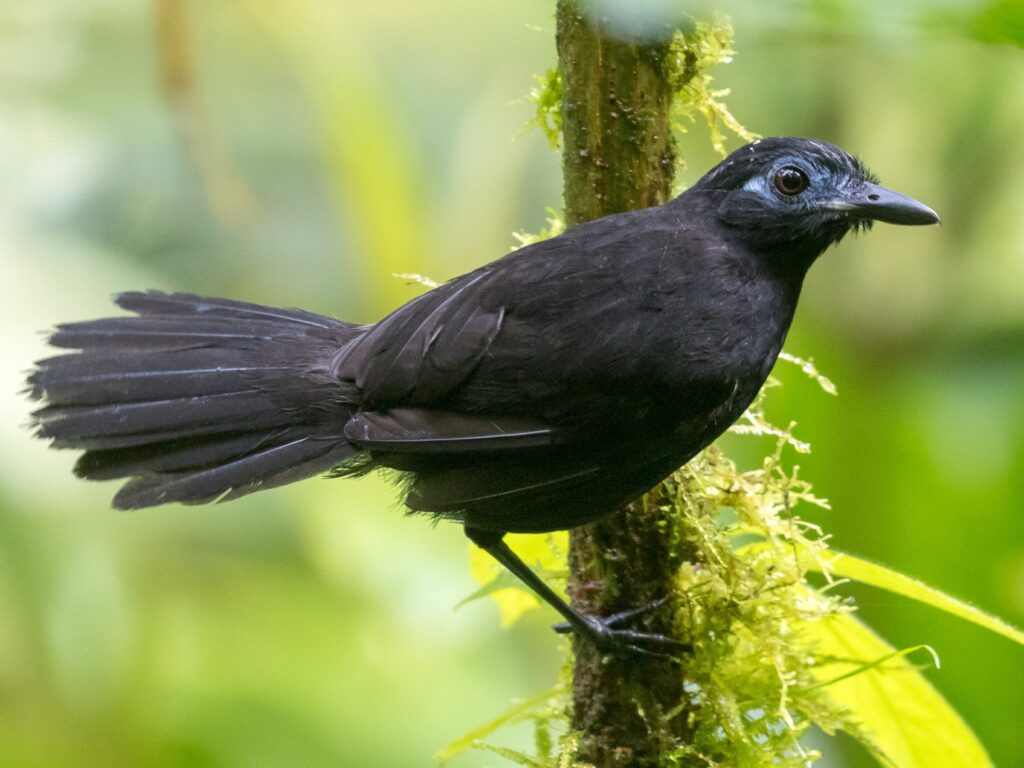
Key birding locations such as Itatiaia National Park, Intervales State Park, and the coastal region of Ubatuba offer access to these avian riches. Many lodges in the region maintain feeders, which can attract a spectacular variety of hummingbirds and tanagers, providing excellent photographic opportunities and close-up views.
In a landscape so heavily impacted by human activity, the role of private reserves, such as the “Toucan’s Trail” mentioned in some birding itineraries , and well-managed ecotourism ventures becomes increasingly vital. These initiatives can protect crucial forest remnants, create corridors for wildlife, and provide economic incentives for conservation, demonstrating that even in fragmented landscapes, dedicated efforts can help preserve biodiversity.
The Galápagos Islands: Evolution’s Showcase
The Galápagos Archipelago, a cluster of volcanic islands straddling the equator in the Pacific Ocean, holds an almost mythical status in the world of natural history. Forever linked with Charles Darwin and his theory of evolution by natural selection, these islands are a living laboratory, showcasing evolutionary processes in dramatic fashion.
Their relative isolation has given rise to a unique island ecology and a host of remarkable bird species, many found nowhere else on Earth. Of the 169 bird species recorded, 105 are considered residents or regular migrants, and among these are 28 endemic landbird species – a clear indication of the islands’ distinct evolutionary trajectory.
The most famous avian residents are undoubtedly Darwin’s Finches, a group of about 17 species (18 if including the Cocos Finch from Cocos Island, Costa Rica) that perfectly exemplify adaptive radiation. These birds, now known to be part of the tanager family rather than true finches, are believed to have evolved from a single ancestral species that arrived from the South American mainland.
In the absence of extensive competition, they diversified to exploit a variety of food sources, resulting in a remarkable array of beak shapes and sizes, each exquisitely adapted to a specific diet – from crushing large seeds (Large Ground Finch) to probing for insects in crevices (Woodpecker Finch, which famously uses tools like twigs or cactus spines) or feeding on cactus flowers and nectar (Common Cactus Finch).
Other members include the critically endangered Mangrove Finch, the Vegetarian Finch, and the delicate Warbler Finches. Observing these finches and their varied adaptations offers a tangible glimpse into the mechanisms of evolution.
Beyond the finches, the Galápagos are home to other iconic birds. The Blue-footed Booby (Sula nebouxii) is instantly recognizable by its comical, vibrant blue feet, which play a key role in its elaborate courtship dances. The Waved Albatross (Phoebastria irrorata) is a critically endangered marvel that breeds almost exclusively on Española Island. These magnificent seabirds are known for their complex and synchronized mating rituals.
Another unique adaptation is seen in the very sad looking Flightless Cormorant (Phalacrocorax harrisi), the only cormorant species in the world to have lost the ability to fly. Endemic to the Galápagos and listed as vulnerable, it has evolved powerful legs and webbed feet for efficient underwater hunting of fish and octopus close to shore. The Galápagos Penguin (Spheniscus mendiculus) holds the distinction of being the only penguin species found north of the equator.
These small, endangered penguins have adapted to the surprisingly warm equatorial waters. Other notable endemics include the majestic Galápagos Hawk (Buteo galapagoensis) and four distinct species of Mockingbirds, each adapted to its specific island or group of islands. American Flamingos and various heron species also grace the lagoons and coastlines.

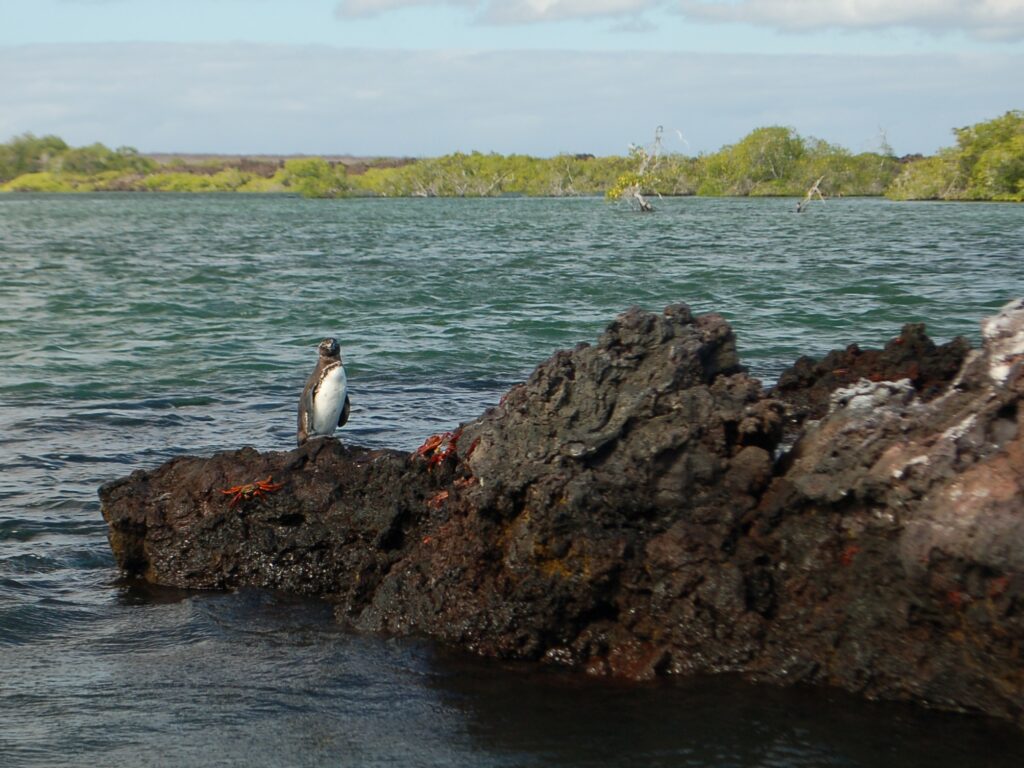
The unique biodiversity of the Galápagos is, however, exceedingly fragile. Island endemics, having evolved in isolation, are particularly vulnerable to introduced threats. Invasive species, such as the parasitic fly Philornis downsi (which affects finch nestlings), feral cats, and rats, pose significant dangers, alongside introduced diseases and habitat loss.
This vulnerability underscores why the Galápagos are not just a historical site for Darwin’s insights but also a critical “living laboratory” for conservation. Ongoing research, such as the long-term studies on finch evolution by Peter and Rosemary Grant , continues to yield profound understanding, while innovative conservation techniques, including invasive species eradication programs and captive breeding efforts for the most threatened species like the Mangrove Finch, are actively being implemented. The lessons learned in protecting this unique avifauna have implications for island ecosystems worldwide.
Grasslands, Pampas & Patagonia: Birds of the Wide Open Spaces
South America’s open landscapes encompass a vast range of habitats, from the fertile Pampas grasslands of Argentina and Uruguay, known for their rich soils and diverse grasses , to the expansive, often windswept plains of Patagonia, which experiences temperate and even polar climates at its southern tip.
The grasslands of southeastern South America represent one of the most extensive grassland ecosystems in the Neotropics, supporting a specialized avifauna that includes at least 22 globally threatened or near-threatened species. These open environments have shaped birds with unique adaptations for life with few trees and often harsh conditions.
Dominating these landscapes are the Rheas, large, flightless birds analogous to Africa’s ostriches and Australia’s emus. Both the Greater Rhea (Rhea americana) and the Lesser (or Darwin’s) Rhea (Rhea pennata) are endemic to the Neotropics and are characteristic sights in open grasslands and scrublands.
Further south, along the rugged Patagonian coasts and on islands like Tierra del Fuego, Penguins make their home. The striking King Penguin (Aptenodytes patagonicus), with its bright orange auricular patches, forms large rookeries , while the Magellanic Penguin (Spheniscus magellanicus) is also a common inhabitant of these southern shores. High in the Andes, but with their range extending into the salt flats of Patagonia, Andean Flamingos (Phoenicoparrus andinus) wade through saline lakes, their beautiful pink plumage a stark contrast to the often-barren landscapes.
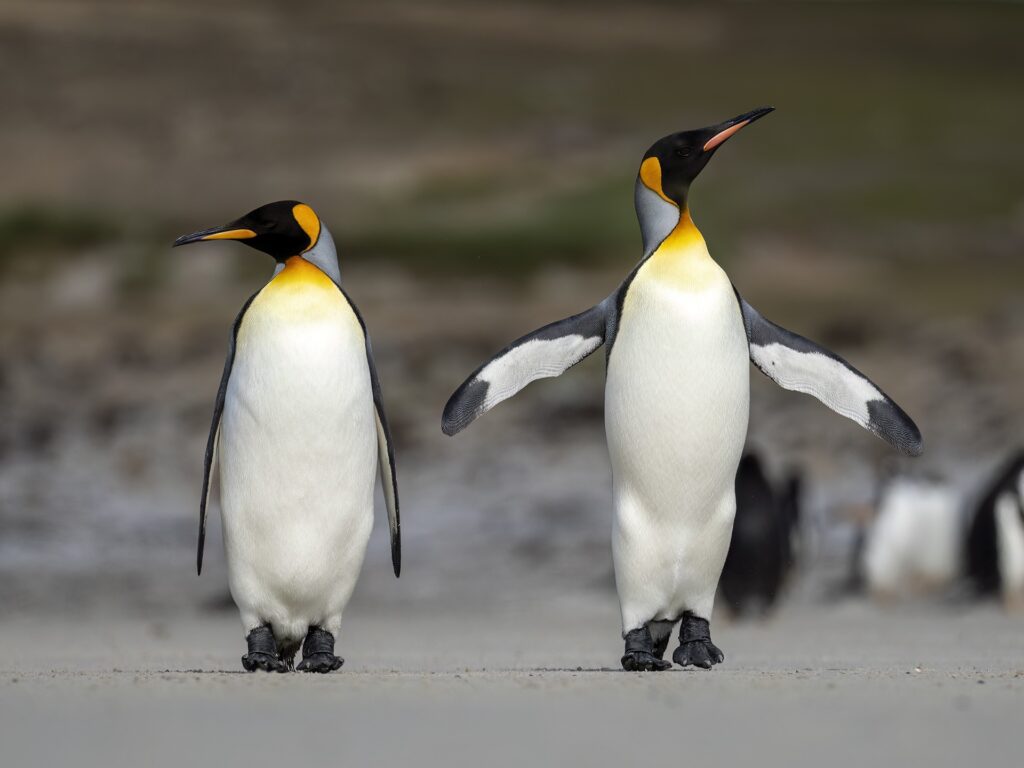
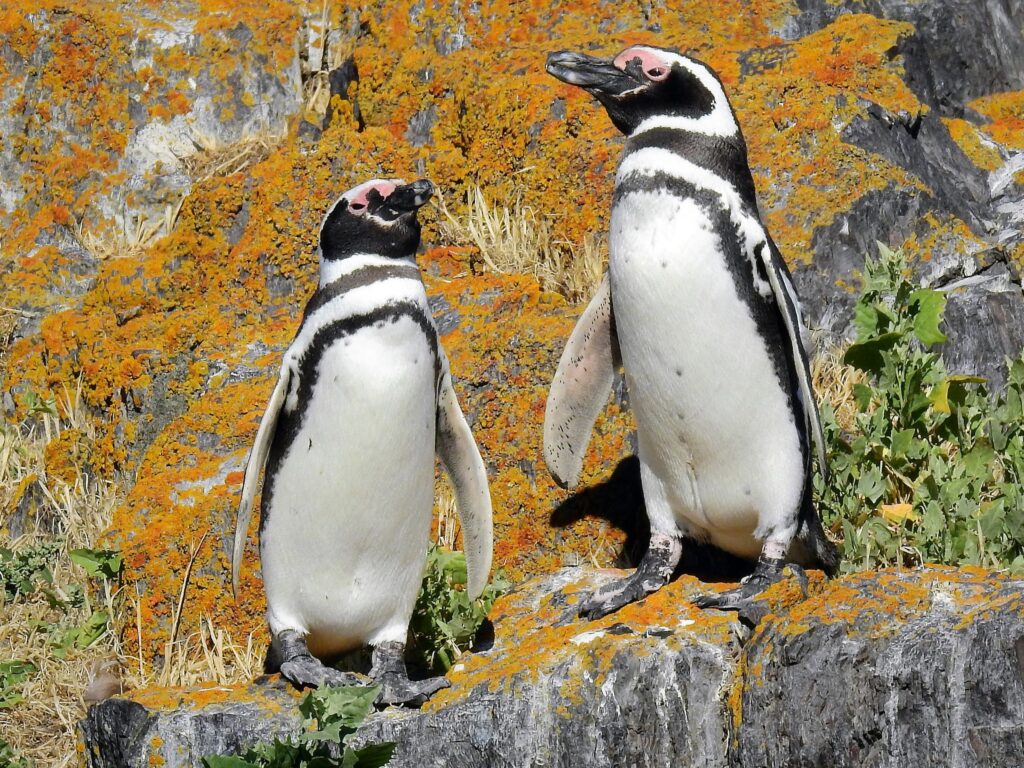
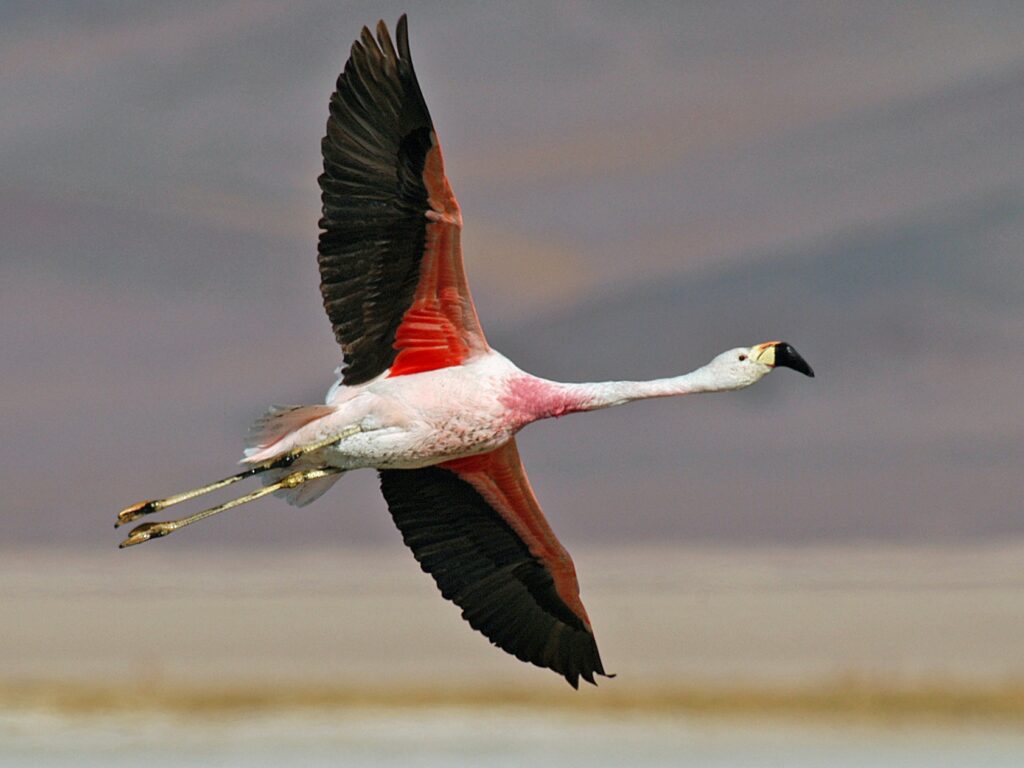
Patagonia, a realm of extremes, showcases remarkable avian adaptations to cold, windy, and often arid conditions. The Magellanic Woodpecker (Campephilus magellanicus), one of the largest woodpeckers in the world, is described as a “titan” of the southern beech forests , while the Austral Parakeet (Enicognathus ferrugineus), the world’s southernmost parrot, braves the challenging climate. However, the avifauna of South America’s grasslands is facing significant pressures.
These ecosystems are often overlooked in conservation priorities compared to rainforests, yet they are highly threatened by the expansion of agriculture (both arable farming and livestock ranching), forestry, the improper use of agrochemicals, unfavorable fire management regimes, and the spread of invasive species. Many grassland bird species are experiencing local extinctions and dramatic range reductions, a “silent decline” that is deeply concerning.
This highlights an urgent need for greater awareness and targeted conservation efforts to protect these unique open habitats and their specialized bird communities. The birds of Patagonia and the Pampas are a testament to avian adaptability, having evolved to thrive in some of the continent’s most challenging environments, making their conservation all the more critical.
Planning Your Feathered Quest: A Guide to Birding in South America
Embarking on a birding adventure in South America can be an immensely rewarding experience, offering encounters with an unparalleled diversity of avian life. Careful planning, however, is key to making the most of such a trip.
From choosing the right time to visit to packing the essential gear and finding expert guidance, a well-prepared birder is set for an unforgettable journey. No matter where your South American birding dreams take you, connecting with a passionate community can enhance your journey.
Optimal Timing: When to Witness South America’s Avian Best
Determining the “best time” to go birding in South America is complex, as the optimal period varies significantly depending on the specific region, target species, and even logistical factors like road conditions.
There is no single window that suits the entire continent. As a general rule, many birders prefer the dry season for easier travel and often more concentrated wildlife. However, the transition period from the dry to the rainy season can also be excellent, as increased insect activity and flowering can stimulate greater bird activity.
Regional considerations are paramount:
- Northeast South America (e.g., parts of Brazil, the Guianas): Generally considered better from December to April.
- West side of South America (including much of the Andes in Peru, Ecuador, Colombia): Often favored from August to November.
- Southern areas (south of the Tropic of Capricorn, e.g., Argentina, Chile, Patagonia): The northern hemisphere’s autumn (September to November) corresponds with spring in these regions, often bringing breeding activity and pleasant weather.
- Amazon Rainforest: The dry season (typically June to October or November) generally means lower water levels, making river navigation easier for exploring deeper into the forest, rendering hiking trails more accessible, and concentrating wildlife, including birds, along riverbanks.
Conversely, the high water season (December to May) allows boats to navigate into otherwise inaccessible flooded forests, offering unique perspectives on canopy wildlife. - Galápagos Islands: December to May is often recommended. This period coincides with warmer waters ideal for snorkeling and the breeding seasons for many iconic species, including sea turtles and blue-footed boobies. The sea lion pupping season occurs from August through November, offering delightful encounters.
- Cloud Forests of Ecuador and Peru: The months from September to February can be particularly rewarding, as local avian populations are augmented by the arrival of migratory birds.
Given this variability, it is crucial for birders to conduct thorough research based on their specific destinations and target species. Consulting trip reports from other birders for particular locations and times of year is highly advisable to fine-tune travel plans.
Gearing Up: Essential Equipment for the Neotropical Birder
Having the right equipment can significantly enhance the birding experience in South America’s diverse environments. While personal preferences vary, certain items are indispensable for observing and identifying the continent’s rich avifauna.
Essential Birdwatching Kit for South American Adventures
| Gear Item | Key Function/Why it’s needed | South America Specific Tips |
|---|---|---|
| Binoculars | Primary tool for spotting and identifying birds. | High-quality optics (e.g., 8×42) are crucial for low-light conditions in rainforests. Consider waterproof/fog-proof models. Lightweight is a plus for long days. |
| Spotting Scope & Tripod | For distant birds (raptors, shorebirds, canopy species), detailed observation. | Essential for open habitats (Patagonia, Pantanal, high Andes). Can be bulky in dense rainforests; consider if your guide will have one. Lightweight tripod is beneficial. |
| Field Guide/App | Species identification, range maps, vocalizations. | Comprehensive South American guides or regional/country-specific ones. Apps with downloadable calls are invaluable (e.g., Birds of South America 2, All Birds Northern South America). |
| Camera | Documenting sightings, capturing memories. | Options range from phone cameras to DSLRs with telephoto lenses. Protect gear from humidity in rainforests. Extra batteries/memory cards are essential. |
| Headlamp/Torch | For owling, pre-dawn starts, navigating lodges at night. | Essential for all regions. Red light filter can be useful for nocturnal wildlife without causing too much disturbance. |
| Appropriate Clothing | Protection from elements, camouflage, comfort. | Rainforest: Lightweight, breathable, quick-drying, long-sleeved shirts and pants for insect/sun protection. Andes: Layers for fluctuating temperatures (cold at altitude, warmer in valleys). Pantanal/Grasslands: Light colors, sun hat. |
| Insect Repellent | Protection against mosquitoes and other biting insects. | Crucial for Amazon, Pantanal, and other tropical lowland areas. DEET-based or Picaridin-based repellents are effective. |
| Sun Protection | Sunscreen, hat, sunglasses. | Essential in all regions, especially at high altitudes (Andes) and open environments (Pantanal, Patagonia, Galápagos). |
| Sturdy Footwear | Comfort and safety on trails. | Waterproof hiking boots for varied terrain. Rubber boots (often provided by lodges or buy locally) are invaluable for muddy rainforest or wetland trails. Good insoles enhance comfort. |
| Daypack | Carrying essentials during outings. | Comfortable, waterproof or with a rain cover, large enough for water, snacks, field guide, extra layers, first-aid kit. |
High-quality optics are paramount. Good binoculars are non-negotiable, and brands like Zeiss, Leica, and Swarovski are often favored for their performance, especially in challenging low-light conditions encountered in dense forests.
While 8x magnification is a common standard, some birders might opt for 10x or 12x for open habitats, though these can be harder to hold steady and may have a narrower field of view in forests. A spotting scope and tripod are invaluable for observing distant birds, studying plumage details, or scanning vast landscapes, and can be particularly useful from canopy towers in the Amazon.
However, their bulk can be a drawback in dense rainforests or on strenuous hikes. It’s worth considering whether a guide will provide a scope. This highlights a common dilemma for birders: balancing the desire for powerful optics with the practicalities of carrying gear in often demanding environments. The final decision should be informed by the specific destination and style of birding.
A comprehensive field guide is essential. While some prefer traditional paper books for the ability to “snoop through the pages” , modern bird ID apps for smartphones offer significant advantages, including vast libraries of bird calls and songs, which are crucial for identification in habitats where birds are more often heard than seen.
Beyond optics and guides, other useful items include a camera to document sightings, a torch or headlamp for nocturnal birding or navigating lodges in the dark, and a smartphone for navigation and birding apps.
Always pack necessary chargers, backup batteries, and international electrical adapters. Some birders use voice recorders and speakers for playback of bird calls, but this practice should be used sparingly and responsibly to avoid stressing birds.
Clothing should be chosen for comfort, protection, and camouflage. Lightweight, quick-drying fabrics are ideal for humid environments, while layers are essential for the fluctuating temperatures of the Andes. Neutral colors are generally recommended.
Don’t forget a wide-brimmed hat, sunscreen, and effective insect repellent, especially for tropical lowland areas. Good quality insoles can make a huge difference if using lodge-provided or locally purchased rubber boots for muddy trails. Finally, it’s a wise precaution to email an image of one’s passport to oneself in case of loss.
Expert Guidance: Finding Reputable Tours and Local Guides
Navigating South America’s vast and diverse birding landscapes can be greatly enhanced by the expertise of local guides and the logistical support of organized tours. Local guides possess invaluable knowledge of specific sites, bird vocalizations, and animal behavior, often leading to more successful and enriching sightings. Organized tours can handle complex logistics, including transportation, accommodation, and access to private reserves or remote areas.
Several tour operators specialize in South American birding. Companies like Rock Jumper Birding, Birding Ecotours, Kolibri Expeditions , Lost World Adventures , Manu Expeditions , and Naturalist Journeys have established reputations for providing quality birding experiences across the continent. Some guides and companies, such as The Andean Birder for Colombia, offer comprehensive services, arranging everything from internal flights and meals to local transport and expert guiding.
When selecting a tour operator, it is worth considering those that demonstrate a commitment to conservation and supporting local communities. For example, Birding Ecotours explicitly aims to contribute to environmental conservation and disadvantaged communities through its operations.
Initiatives like the Central Andes Birding Trail in Colombia, developed in partnership with Audubon and local organizations, exemplify a growing trend towards professionalizing bird guiding as a sustainable livelihood that directly benefits local conservation efforts. This trail features Audubon-trained professional birding guides and operators, linking tourism revenue to community development and the protection of bird habitats.
Choosing guides and tours that are part of such initiatives not only ensures a high-quality birding experience but also allows travelers to contribute positively to the regions they visit, fostering a symbiotic relationship between tourism and conservation.
Indispensable Resources: Databases, Apps, and Communities
The modern birder planning a trip to South America has access to an unprecedented wealth of information through online databases, mobile applications, and dedicated ornithological communities. These resources have revolutionized how birders prepare for trips, identify species, and contribute to our collective understanding of birdlife.
Authoritative Online Databases:
- Avibase: Managed by Denis Lepage and hosted by Birds Canada, Avibase is an extensive and meticulously maintained database containing information on all the world’s birds, including taxonomy, distribution maps for over 20,000 regions, and synonyms in multiple languages. It is regularly updated with the latest taxonomic changes from leading authorities, including the South American Classification Committee (SACC).
- Birds of the World: This comprehensive subscription-based resource provides authoritative, in-depth life history accounts for over 10,700 bird species. It integrates content from several landmark publications, including the Handbook of The Birds of the World and Neotropical Birds.
The Neotropical Birds section, a key component, offers free access to a wealth of information on the birds of Central and South America and the Caribbean. - Xeno-canto: An invaluable community-driven database, Xeno-canto hosts an enormous collection of bird song and call recordings from around the globe, including extensive coverage of South American species. This resource is indispensable for learning vocalizations, a critical skill for birding in dense habitats.
Mobile Applications:
- All Birds Northern South America: This field guide app, available for iOS and Android, covers the avifauna of Ecuador, Colombia, the Guianas, Peru, and Venezuela.
- Birds of South America 2: Also for iOS and Android, this app is promoted as one of the most complete birding applications for the continent. These apps often include illustrations, photographs, range maps, and vocalizations, making them powerful field tools.
Organizations and Communities:
- Neotropical Bird Club: A UK-based charity, the Neotropical Bird Club fosters interest in the birds of the New World tropics and their conservation, welcoming members from around the world.
- American Ornithological Society (AOS): This leading professional society publishes influential journals like Ornithology and Ornithological Applications and oversees important checklists, including the SACC.
Traditional Field Guides (Books): While digital resources are increasingly popular, many birders still rely on printed field guides. Notable titles for South America include Birds of Northern South America (in two volumes), Birds of South America: Passerines, Birds of Southern South America and Antarctica, and the Collins Field Guide to the Birds of South America: Non-Passerines.
This digital revolution in birding resources provides powerful tools for identification, learning, and contributing to citizen science initiatives like eBird (often linked with databases like Avibase and Birds of the World). This accessibility to information can significantly deepen a birder’s understanding and appreciation of South America’s avian treasures.
Guardians of the Flyways: Bird Conservation in South America
The breathtaking avian diversity of South America faces a daunting array of threats. From the shrinking Amazon rainforest to the fragmented Atlantic Forest and the pressured grasslands, human activities and global environmental changes cast a long shadow over the continent’s feathered inhabitants.
Yet, amidst these challenges, dedicated organizations and inspiring initiatives are working tirelessly to protect these irreplaceable natural treasures, offering hope for the future of South America’s birds.
Pressing Threats: Challenges Facing the Continent’s Birds
The survival of many South American bird species is imperiled by a complex web of interconnected threats, demanding multifaceted conservation responses. Habitat Loss and Fragmentation stands as arguably the most pervasive challenge.
In the Amazon, vast tracts of rainforest are cleared for agriculture (cattle ranching, soy cultivation), logging operations, and large-scale infrastructure projects like dams and roads. This directly impacts species like the Harpy Eagle, which relies on extensive, mature forests for hunting and nesting.
The Atlantic Forest has already suffered catastrophic deforestation, with remaining patches highly fragmented, isolating populations and reducing genetic diversity. Similarly, South America’s extensive grasslands are rapidly being converted for intensive livestock industries, arable agriculture, and commercial forestry, leading to severe habitat loss and degradation for specialist grassland birds.
The Illegal Wildlife Trade continues to decimate populations of highly sought-after species. Macaws, prized for their beauty, are heavily targeted. The Hyacinth Macaw, for instance, suffered massive captures for the pet trade in the 1980s, and illegal trafficking persists today, alongside threats from habitat loss and use of their feathers. Scarlet Macaws are also significantly affected by poaching for food, feathers, and the pet trade.
Climate Change is an overarching threat with far-reaching consequences. Projections indicate that climate shifts could shrink the suitable range for species like the Harpy Eagle. Migratory birds, which undertake arduous journeys across hemispheres, are particularly vulnerable; those traversing the longest distances between breeding grounds in North America (e.g., Canada) and non-breeding areas in South America face the highest overall risk from global change, which encompasses climate impacts and habitat alterations. For species like the Galápagos Penguin, climate-driven phenomena such as intensified El Niño events can drastically reduce prey availability, impacting breeding success.
Pollution and the improper use of agrochemicals pose significant risks, especially in agricultural landscapes like the grasslands, where pesticides and herbicides can contaminate food sources and water bodies. Other direct threats include persecution stemming from human-wildlife conflict or misconceptions; Andean Condors are sometimes targeted by livestock farmers , and Harpy Eagles have been hunted due to mistaken beliefs that they threaten livestock or people.
Collisions with powerlines are a known hazard for large soaring birds. In sensitive ecosystems like the Galápagos, invasive alien species – including predators like cats and rats, and parasites like Philornis downsi – can devastate native bird populations, which often lack defenses against these novel threats. Broader unsustainable agricultural practices also contribute to the degradation of bird habitats across the continent.
The interconnectedness of these threats often creates a compounding effect. For example, habitat loss can concentrate remaining bird populations, making them easier targets for illegal poachers. Similarly, climate change can exacerbate the impacts of habitat degradation by altering food availability or breeding conditions.
Effective conservation, therefore, requires holistic strategies that address these multiple, often interlinked, pressures. The plight of long-distance migrants particularly underscores the need for international cooperation, as these birds depend on a chain of healthy habitats across multiple countries throughout their annual cycle. Protecting them in one part of their range is insufficient if critical threats remain elsewhere.
Hope on the Wing: Conservation Successes and Leading Organizations
Despite the formidable challenges, significant efforts are underway across South America to conserve its rich avian heritage. A growing network of international and local organizations, often working in collaboration with governments and communities, is implementing innovative strategies and achieving tangible successes, offering beacons of hope. Understanding the science behind bird populations and their habitats is key to effective conservation. Learn more about(https://birdingcollective.com/bird-science/).
While large-scale species recovery stories on the continent are hard-won, models from elsewhere provide inspiration and transferable knowledge. The captive breeding and reintroduction program for the California Condor in North America , for example, has informed similar efforts for the Andean Condor in South America, where zoo-raised birds have been released in Colombia, Venezuela, and Peru to bolster wild populations.
Several large-scale initiatives are making significant strides. The Southern Wings program, coordinated by the Association of Fish and Wildlife Agencies in the U.S., exemplifies the crucial “full annual cycle conservation” approach for migratory birds.
By connecting U.S. state agencies with partners in Latin America and the Caribbean, Southern Wings has invested millions of dollars (leveraging further partner funding) to conserve over 1.5 million acres of critical non-breeding and stopover habitat, directly benefiting 81 priority shared bird species. Projects have included forest bird conservation in Guatemala and grassland bird conservation in Mexico, demonstrating the model’s effectiveness.
A particularly ambitious initiative is Conserva Aves, a collaborative effort led by major international organizations including the American Bird Conservancy, National Audubon Society, BirdLife International, Birds Canada, and the Network of Latin American and Caribbean Environmental Funds (RedLAC).
This visionary program aims to catalyze the establishment and strengthening of more than 100 new subnational protected areas, covering over two million hectares across nine Latin American countries, including key South American nations like Colombia, Ecuador, Peru, Bolivia, and Chile.
The focus is on safeguarding territories vital for threatened, endemic, and migratory birds, recognizing that well-managed protected areas are an effective strategy for conservation, climate change mitigation, and supporting local livelihoods. This highlights a cornerstone of many conservation strategies: the creation and effective management of protected areas provide essential safe havens for biodiversity.
Leading Bird Conservation Champions in South America
| Organization Name | Primary Mission/Key South American Projects | Website Link |
|---|---|---|
| American Bird Conservancy (ABC) | Conserving wild birds and their habitats throughout the Americas. Works with >50 partners in Latin America on habitat for migratory birds (e.g., Summer Tanager, Wood Thrush). | abcbirds.org |
| National Audubon Society | Conserving and restoring natural ecosystems, focusing on birds. Key partner in Conserva Aves, with extensive work across the Americas. | audubon.org |
| BirdLife International | Global partnership for nature conservation, working through local partners worldwide to protect birds, habitats, and biodiversity. Active in South America through national partners. | birdlife.org |
| Conserva Aves | Partnership (ABC, Audubon, BirdLife, Birds Canada, RedLAC) to create/strengthen 100+ protected areas (2M+ hectares) in 9 Latin American countries for threatened, endemic, and migratory birds. | conserva-aves.org |
| Local NGOs & Community Associations | Numerous national and local organizations (e.g., Yarumo Blanco Community Association, Colombia ) implement on-the-ground conservation, manage reserves, and engage communities. | Varies (often found via international partners or specific project websites) |
| South American Classification Committee (SACC) | While primarily taxonomic, their work provides the scientific foundation for conservation by defining species units and distributions, guiding conservation priorities. | (https://www.museum.lsu.edu/~Remsen/SACCBaseline.htm) |
The success of these endeavors often hinges on collaboration. Initiatives like Conserva Aves, Southern Wings, and the Audubon-supported Central Andes Birding Trail demonstrate the power of networks that bring together international NGOs, local grassroots organizations, government agencies, and local communities.
This collaborative approach is essential for tackling complex, large-scale conservation challenges that transcend national borders, such as protecting migratory flyways or conserving vast biomes like the Amazon. By pooling resources, expertise, and local knowledge, these partnerships can achieve far more than any single entity acting alone.
Conclusion: The Unforgettable Call of South America’s Avian Treasures
South America, the undisputed bird continent, offers a symphony of wings, a dazzling testament to the power of evolution and the richness of life on Earth. From the emerald depths of the Amazon, alive with the flash of macaws and the calls of unseen wonders, to the towering peaks of the Andes where condors soar and hummingbirds dance like living jewels.
From the teeming wetlands of the Pantanal, a spectacle of avian abundance, to the unique evolutionary laboratory of the Galápagos Islands and the fragile, endemic-rich remnants of the Atlantic Forest – the continent’s ornithological significance is simply unparalleled.
The sheer diversity of forms, colors, and behaviors encountered across these varied landscapes is breathtaking. Each habitat has sculpted its own unique avian communities, from the highly specialized Darwin’s finches to the resilient penguins of Patagonian shores.
Yet, this extraordinary heritage is fragile. The pressing threats of habitat destruction, climate change, and illegal trade cast a somber shadow, reminding us that these natural treasures are not inexhaustible.
However, the dedication of countless individuals, communities, and organizations offers a powerful counter-narrative of hope. Through research, habitat protection, sustainable practices, and international collaboration, efforts are underway to safeguard these flyways and the incredible birds that depend on them.
The passion for birding itself can be a potent force for good, transforming an appreciation for avian beauty into a deeper understanding of ecological interconnectedness and a commitment to conservation. By practicing responsible birding that respects wildlife and their environments, supporting conservation initiatives, and advocating for the protection of these vital ecosystems, everyone can play a role.
The call of South America’s avian treasures is indeed unforgettable – an invitation to witness nature’s grandeur, to marvel at its intricacies, and to become dedicated stewards of its future. Continue your journey into the world of birds with us at the(https://birdingcollective.com/).
